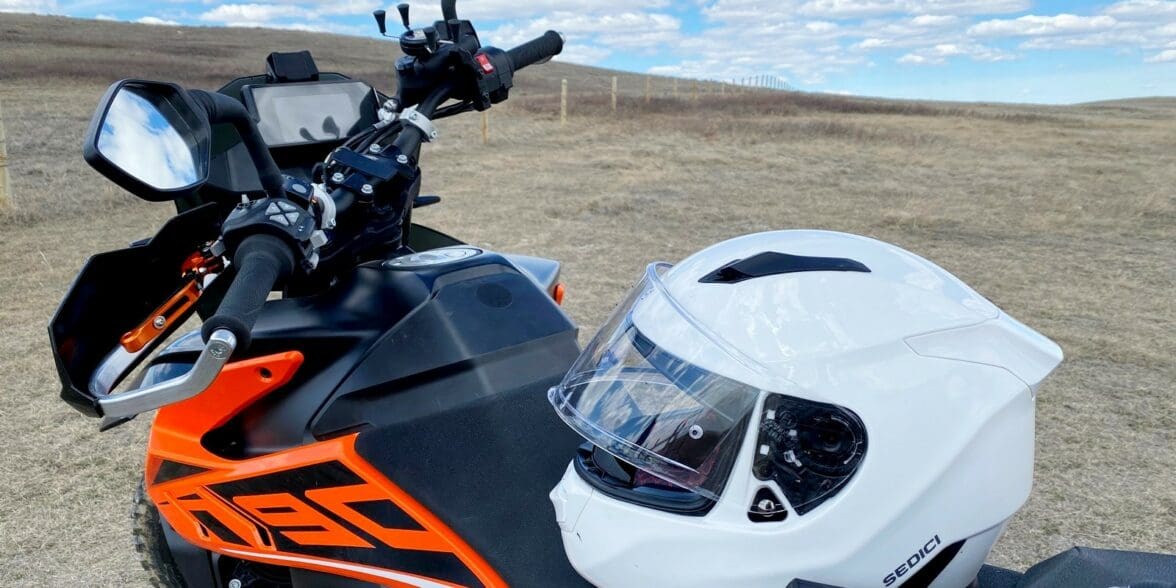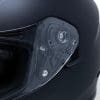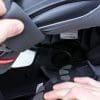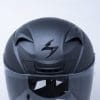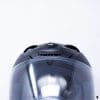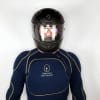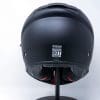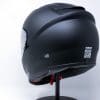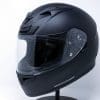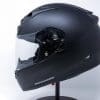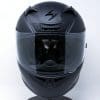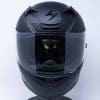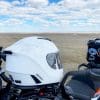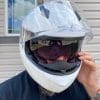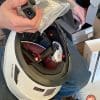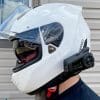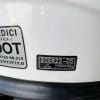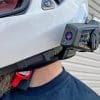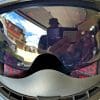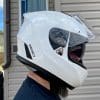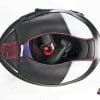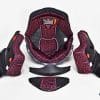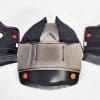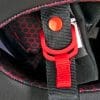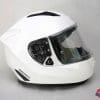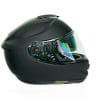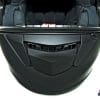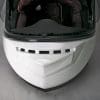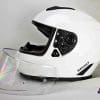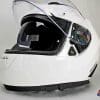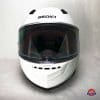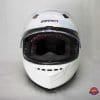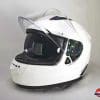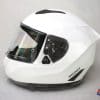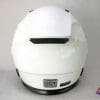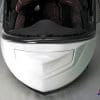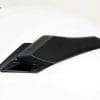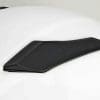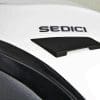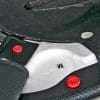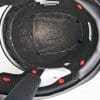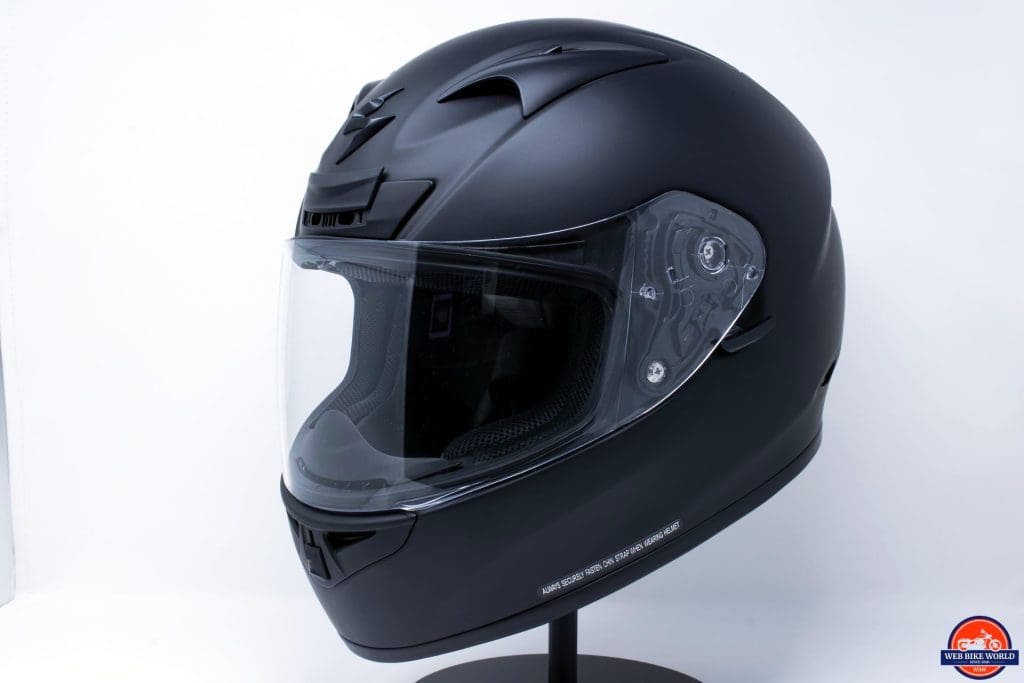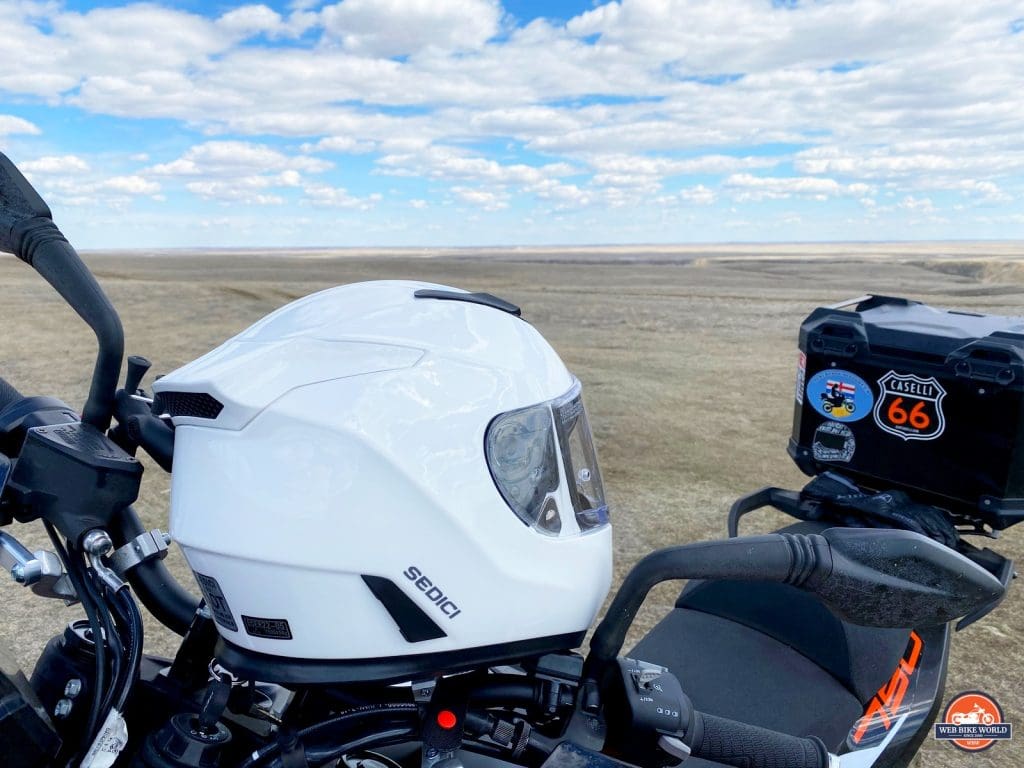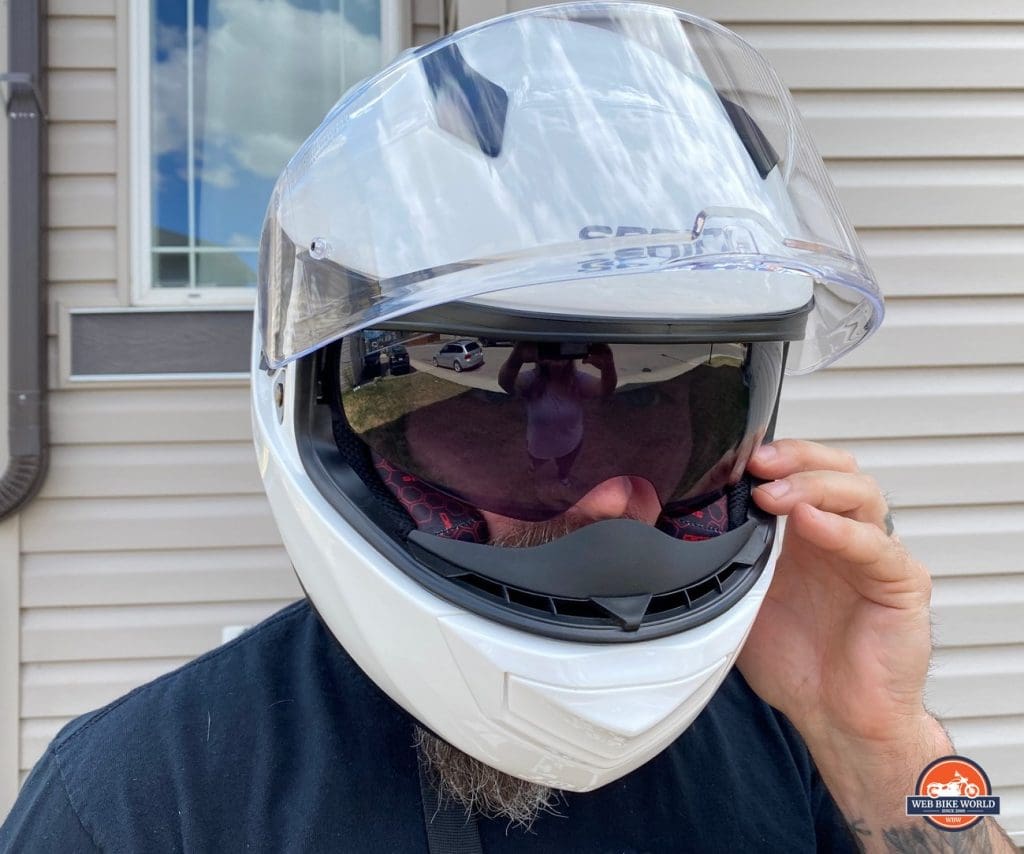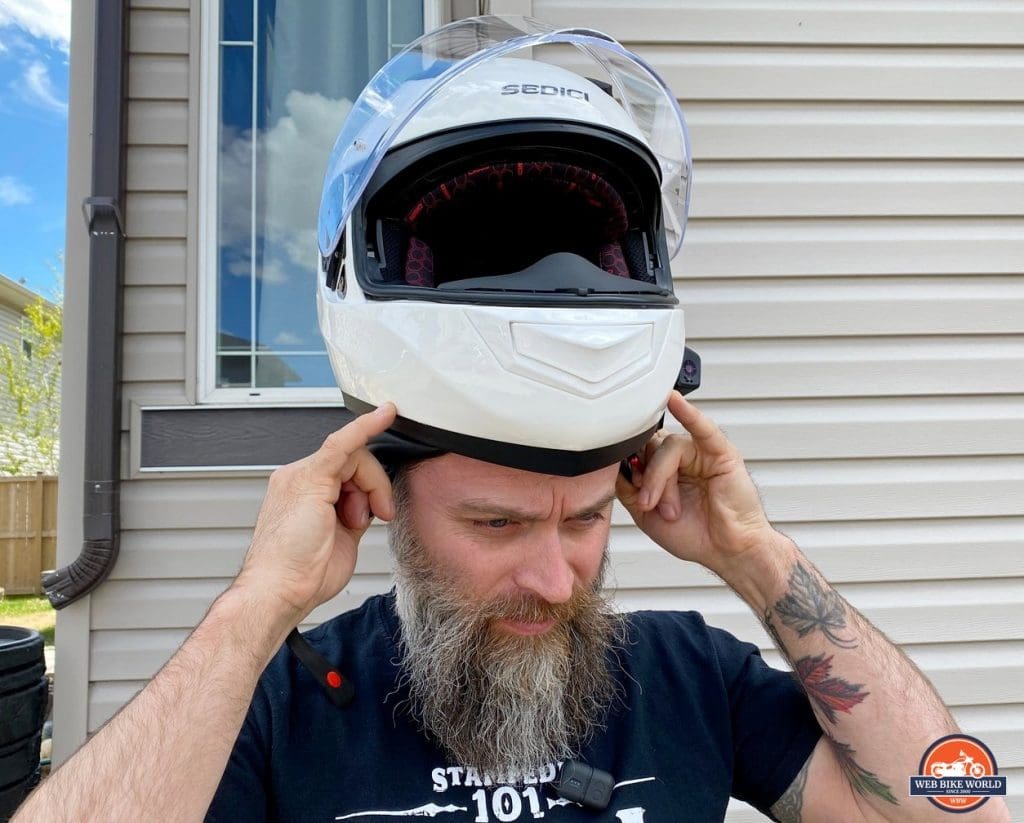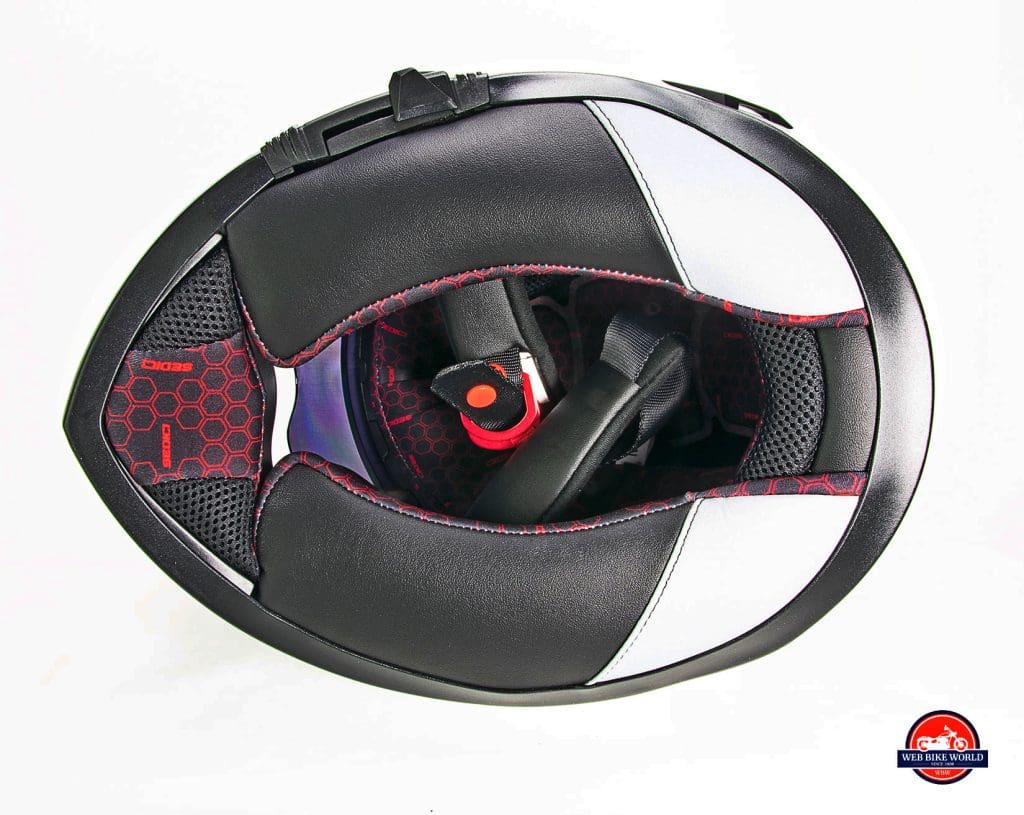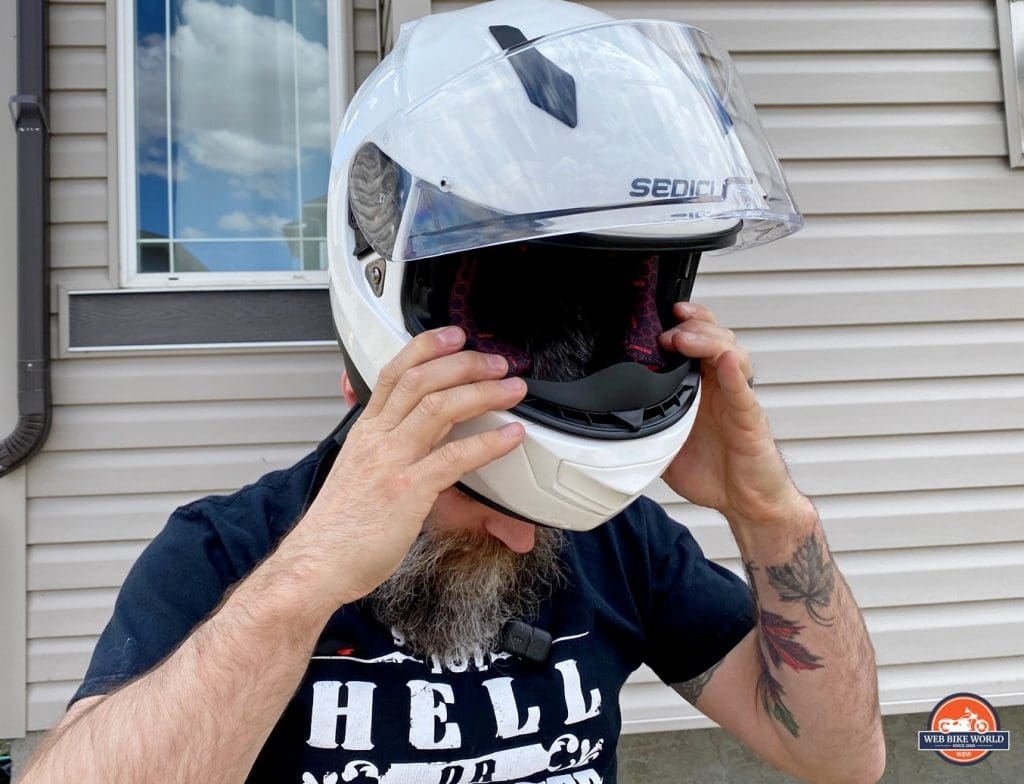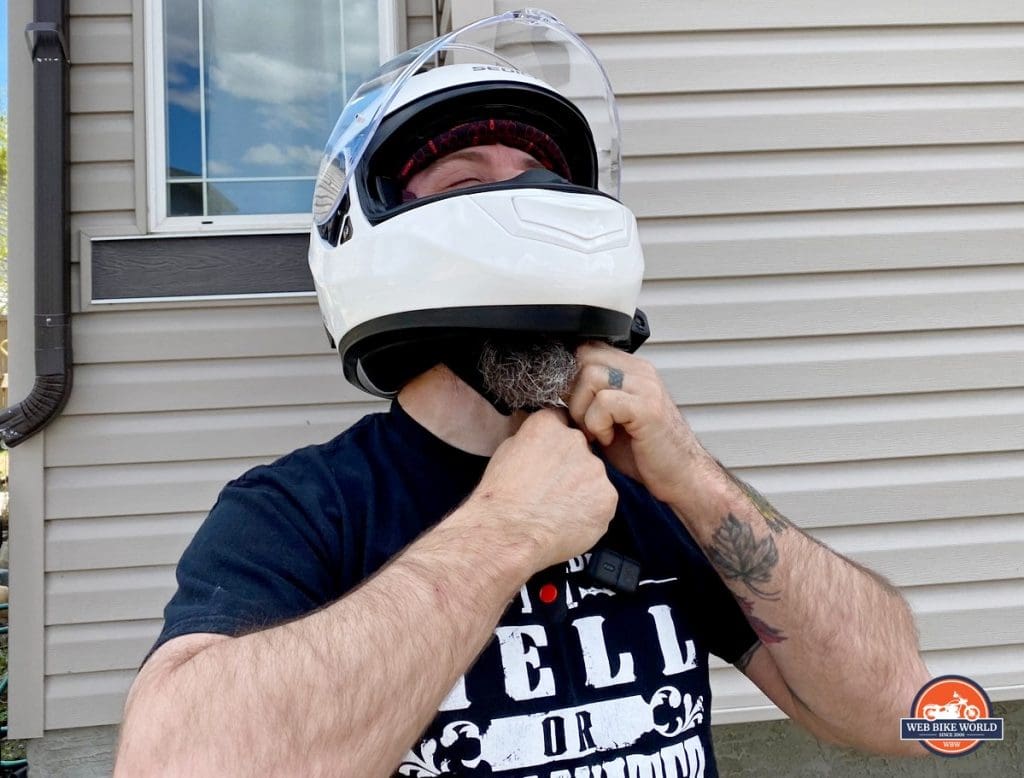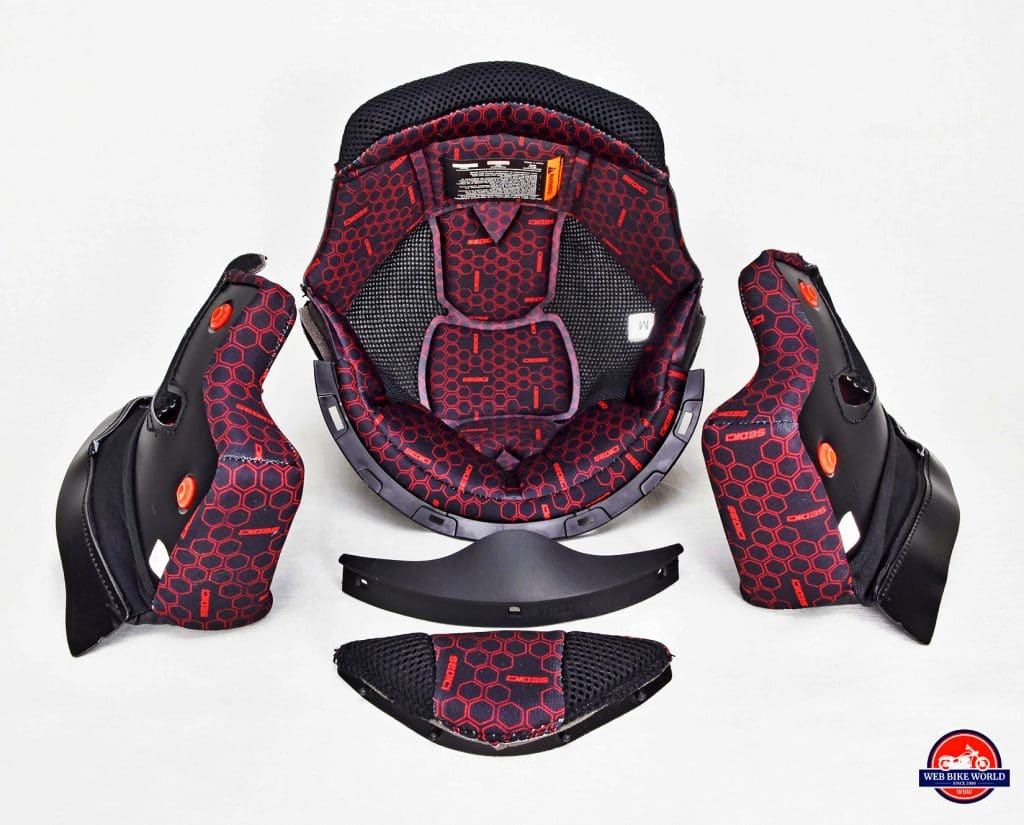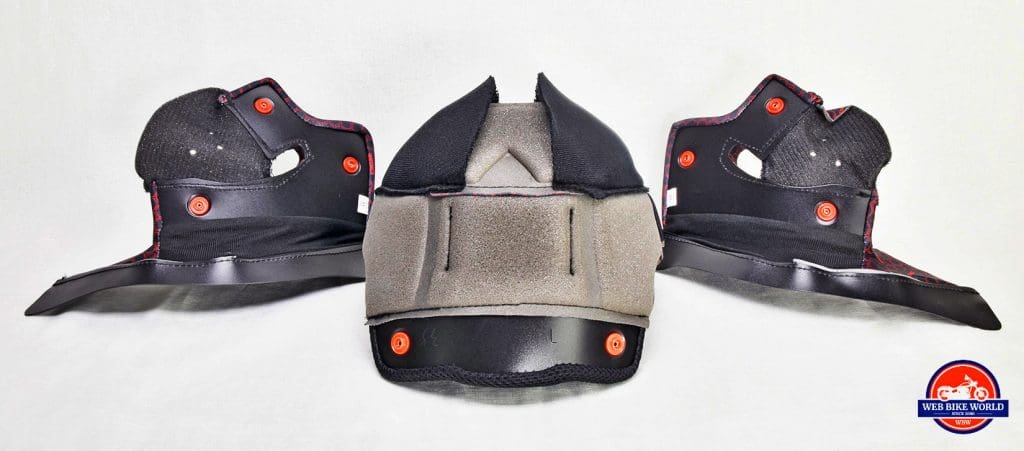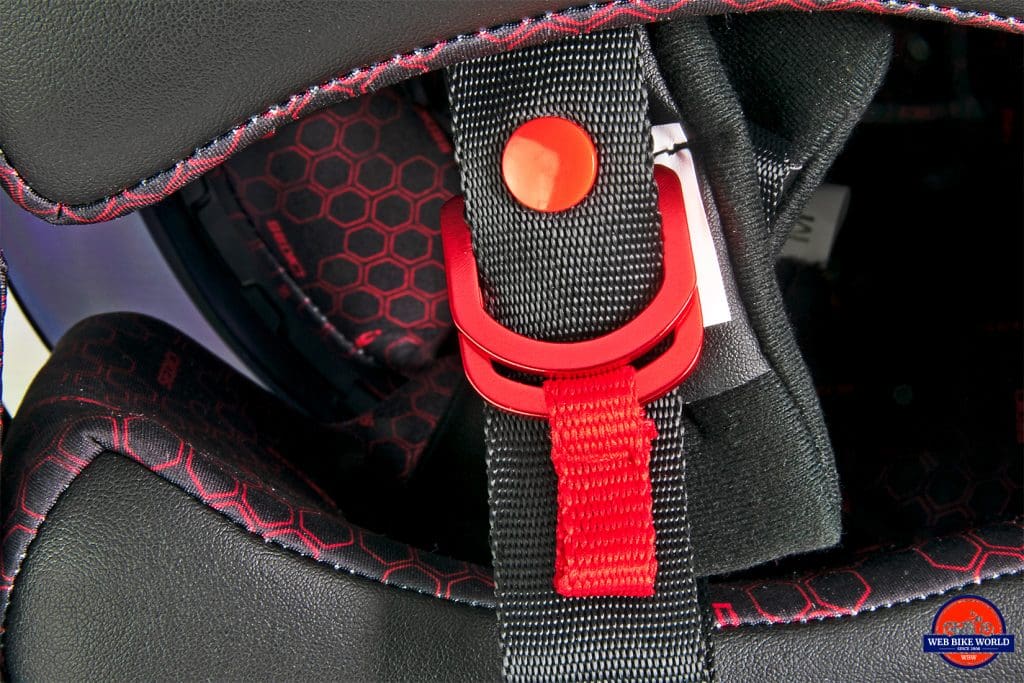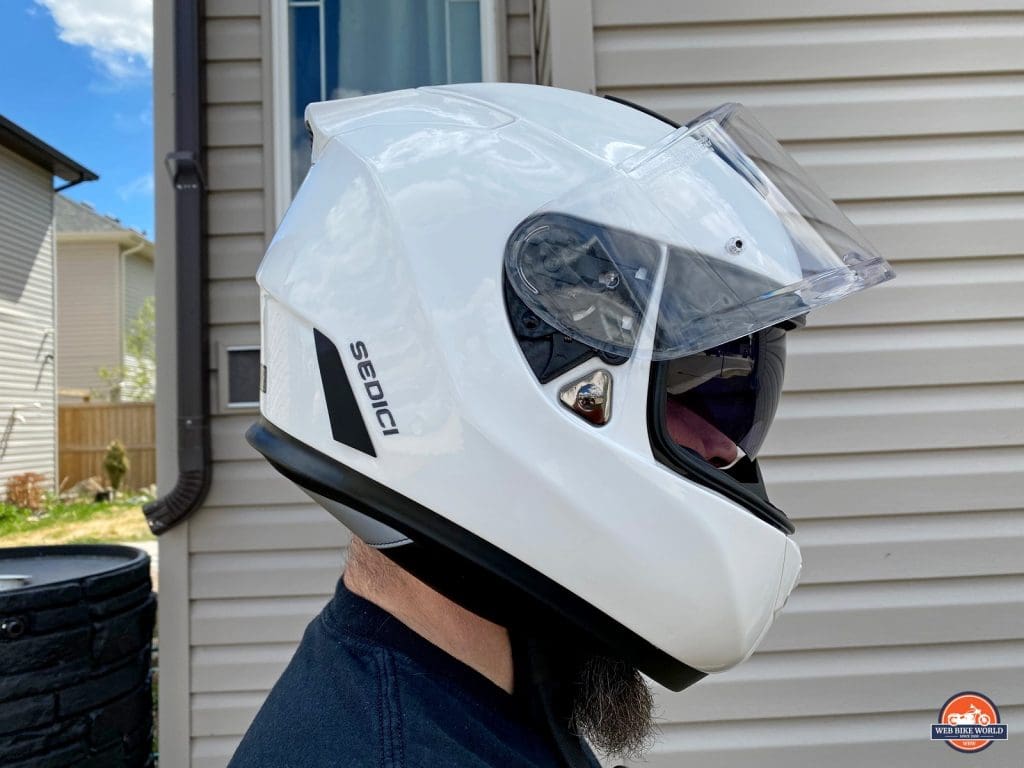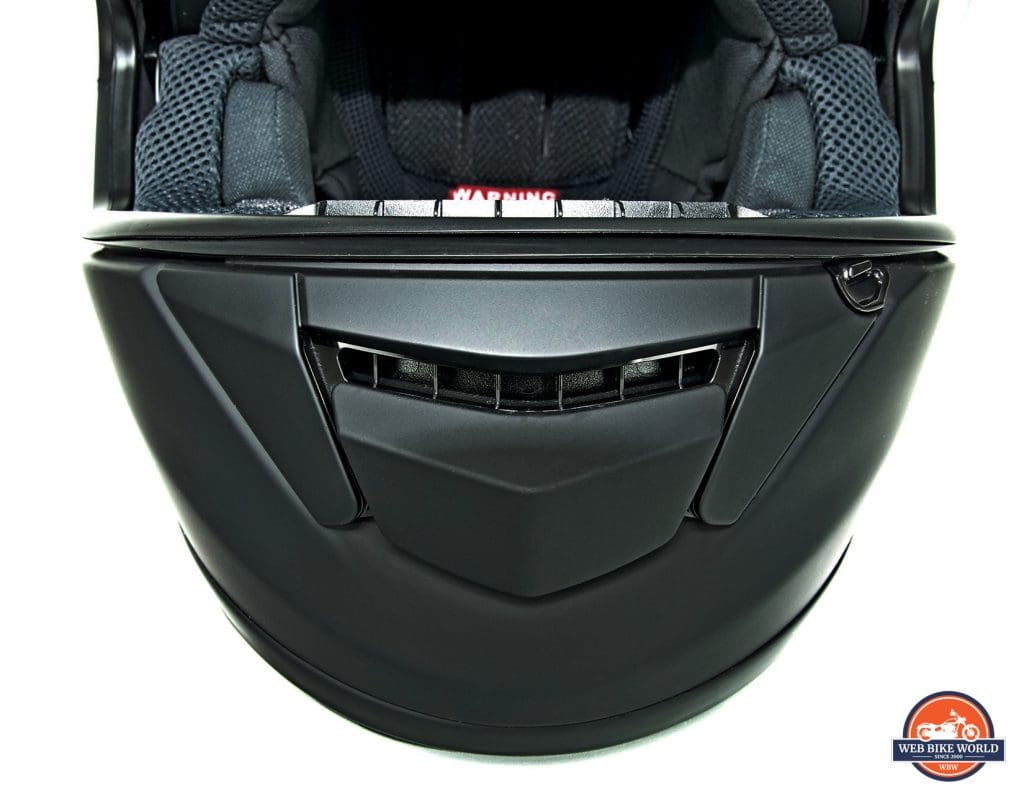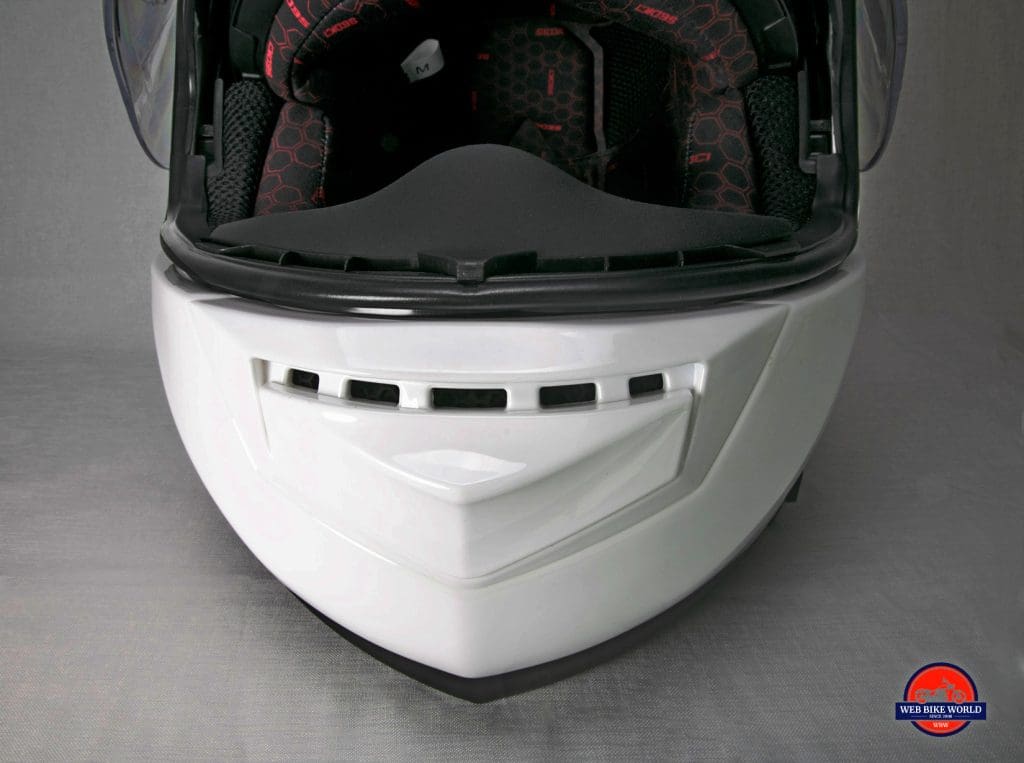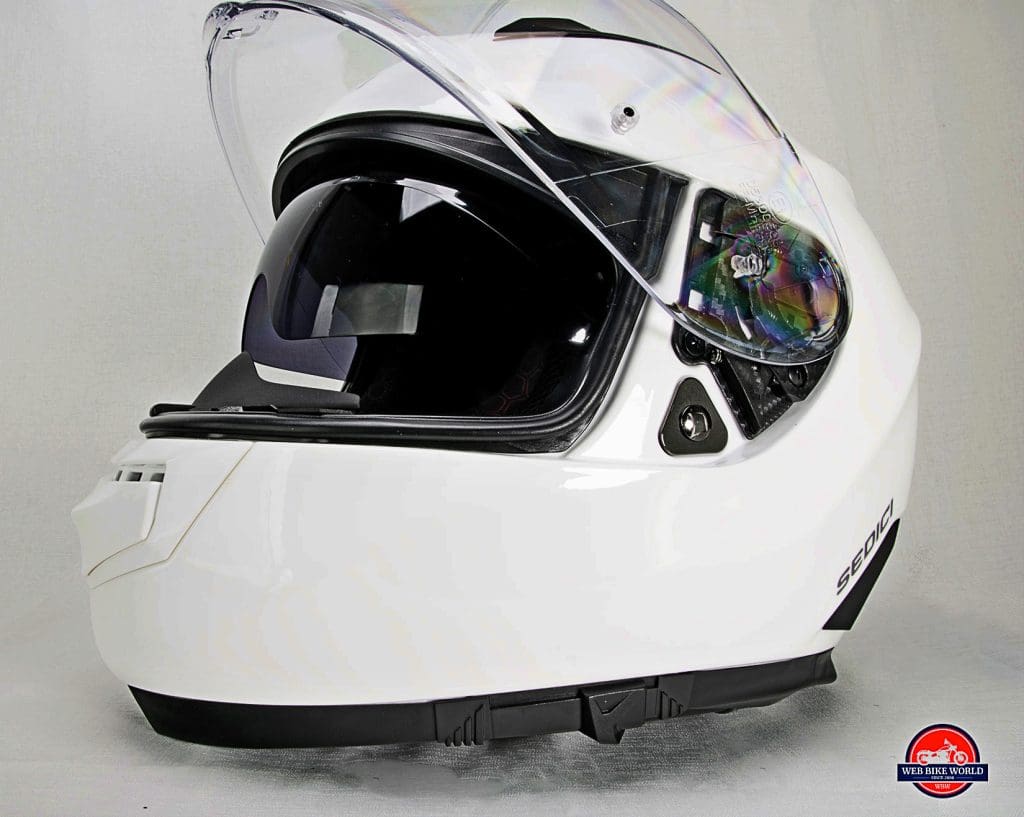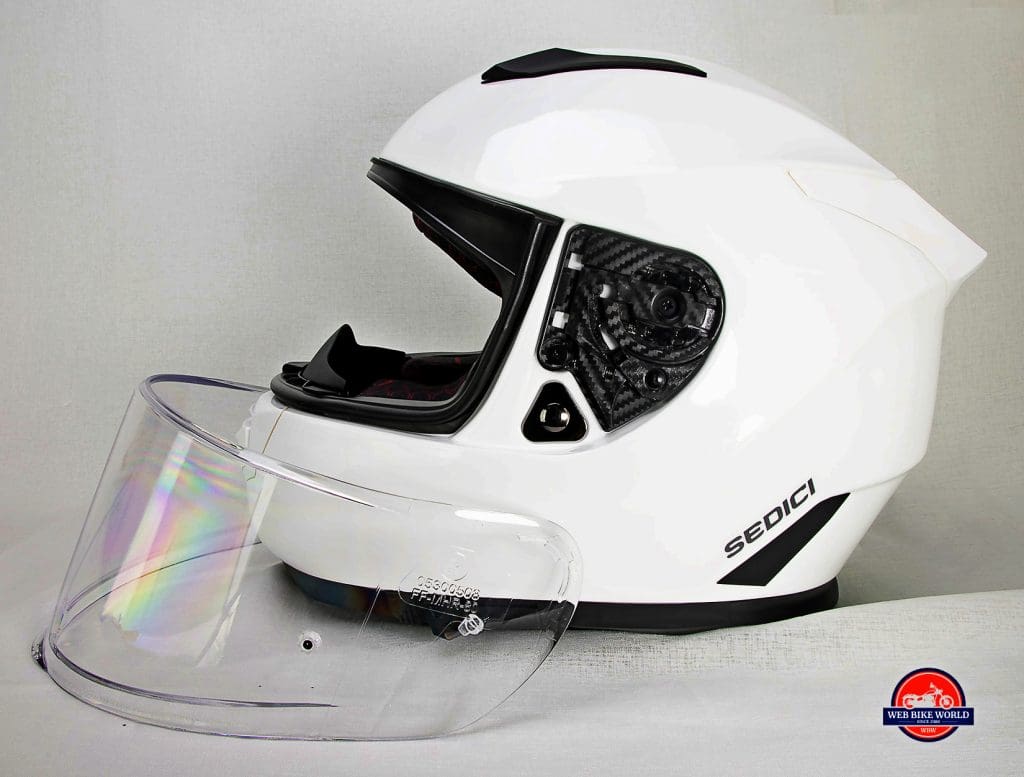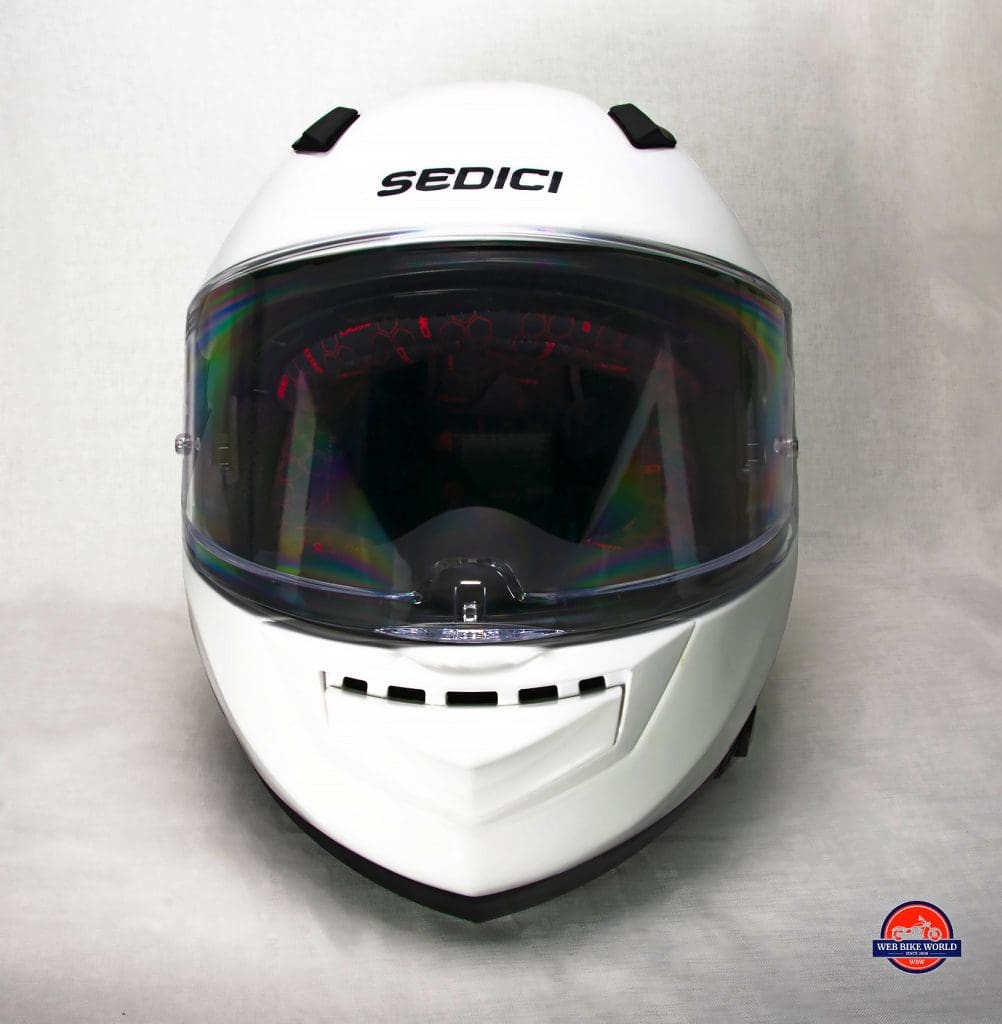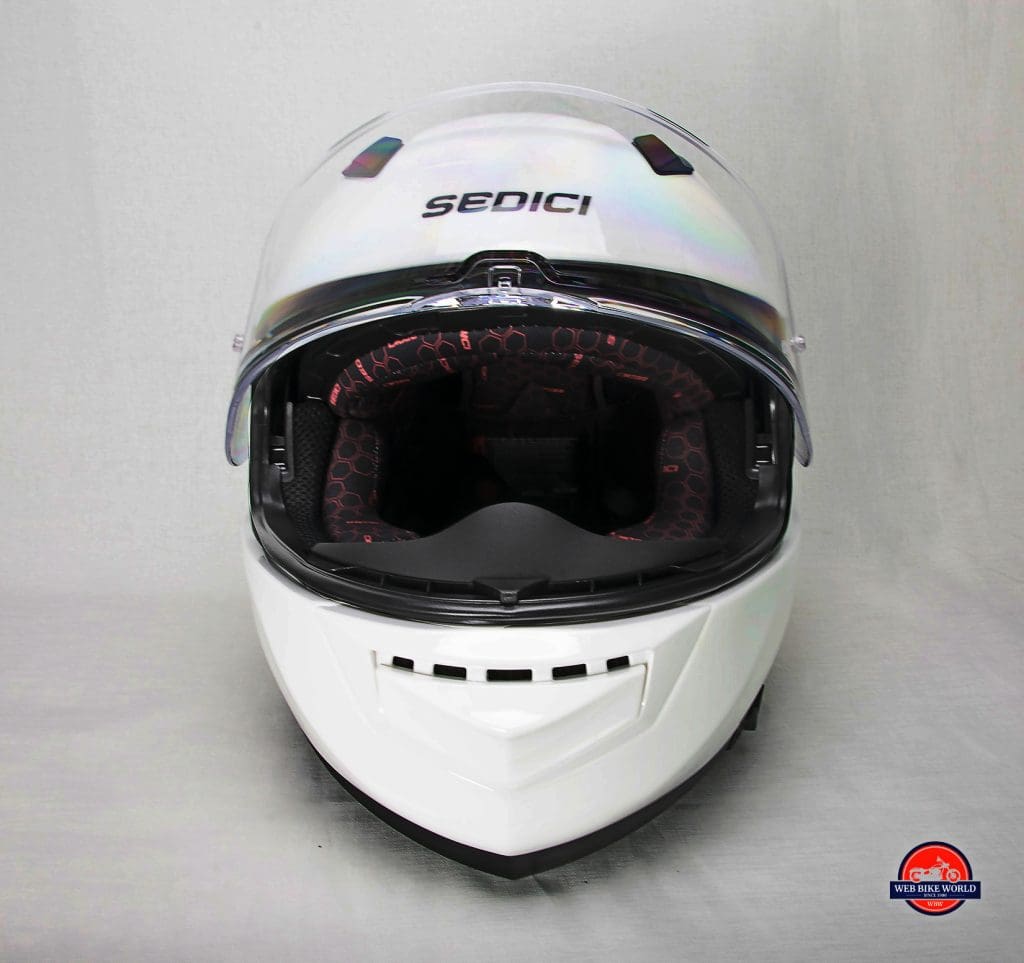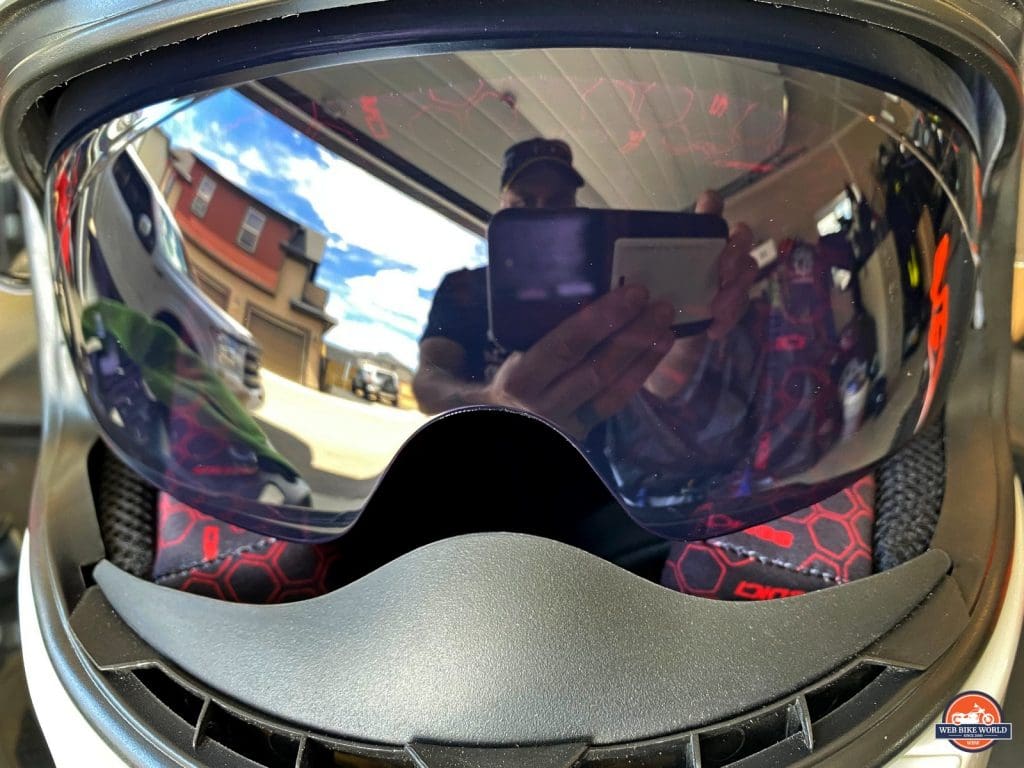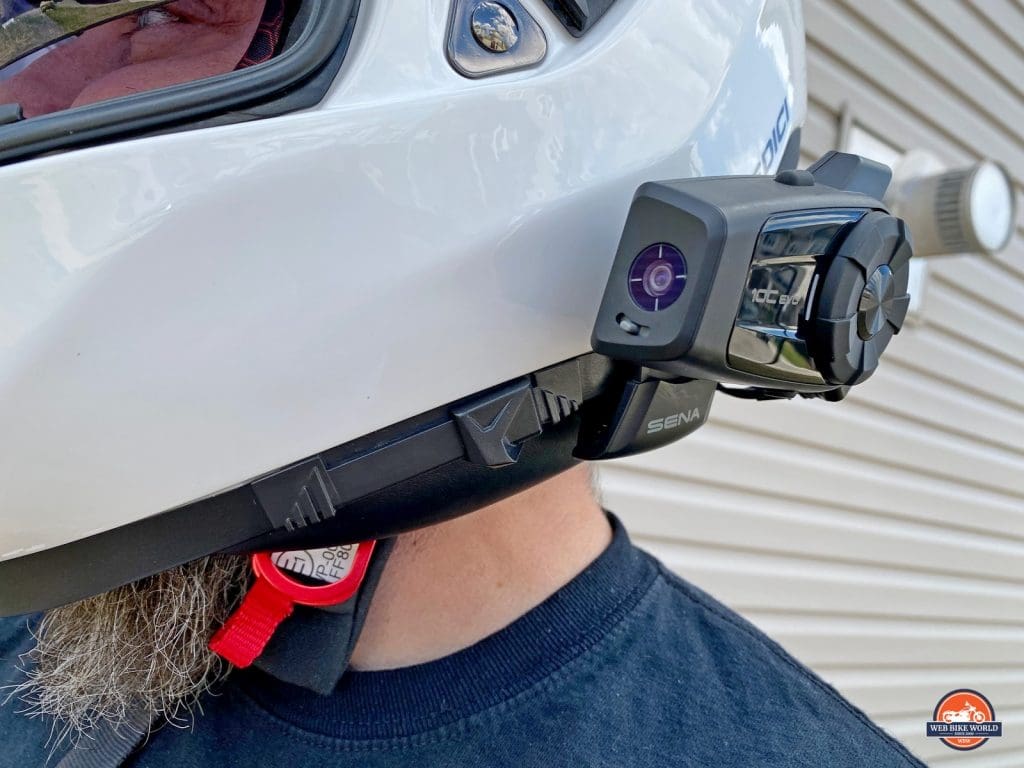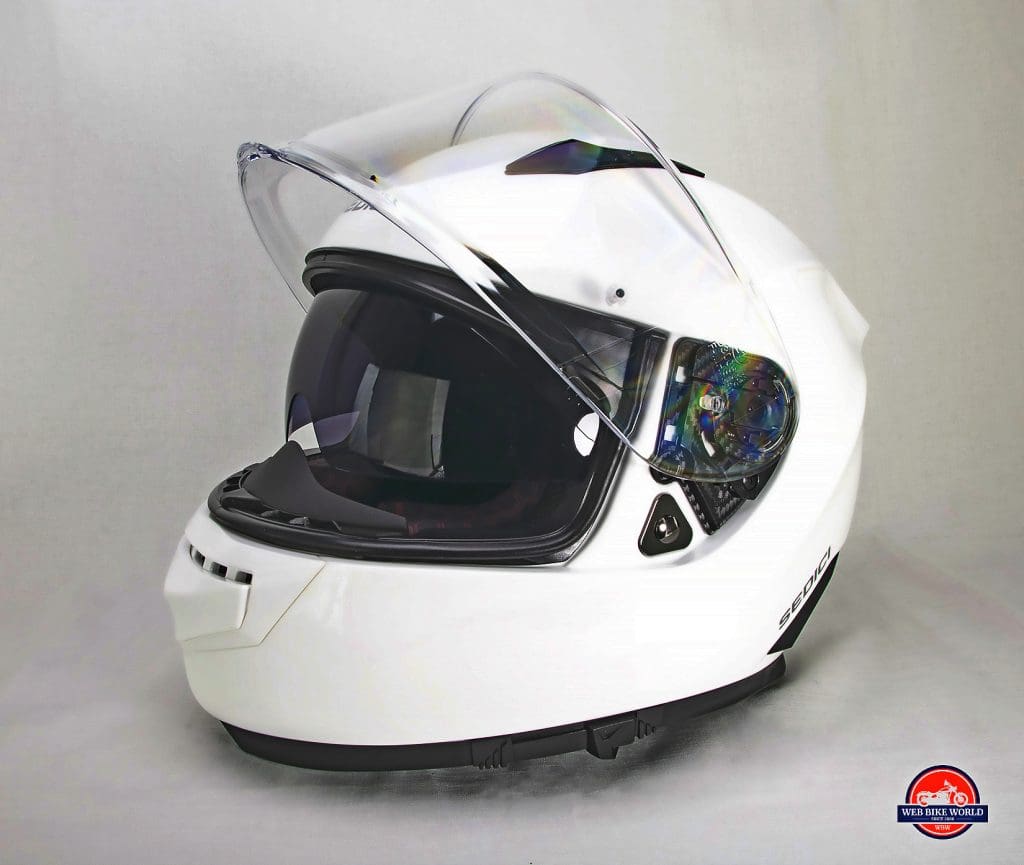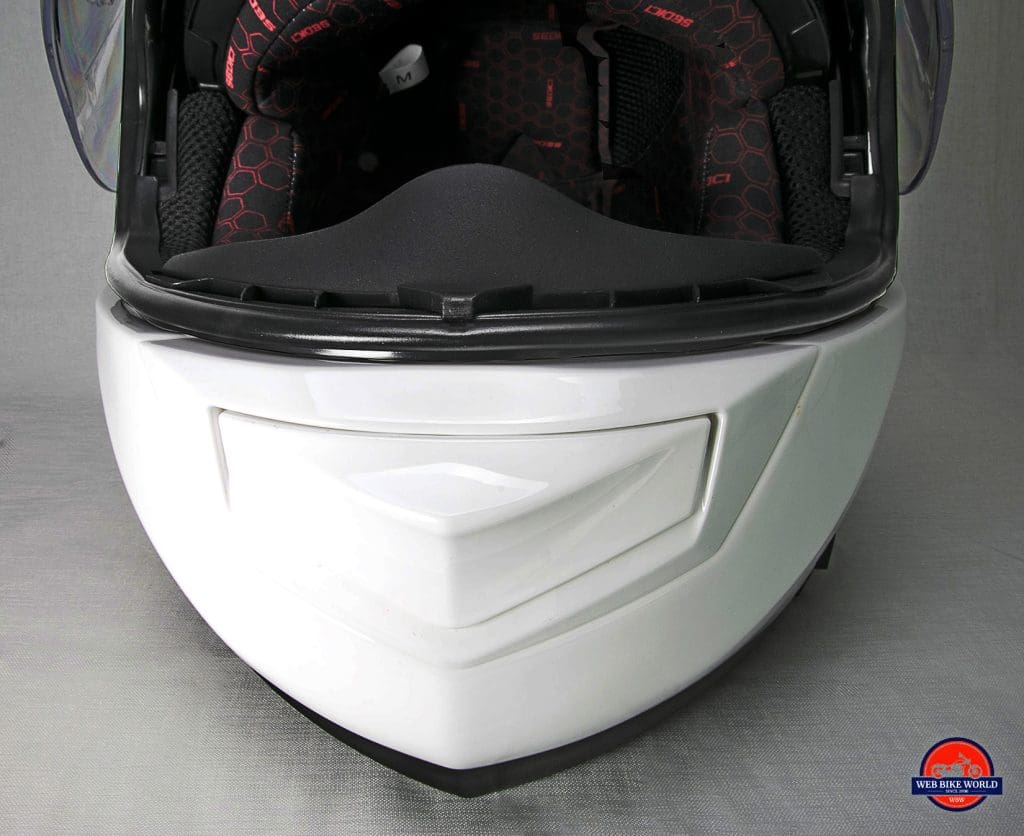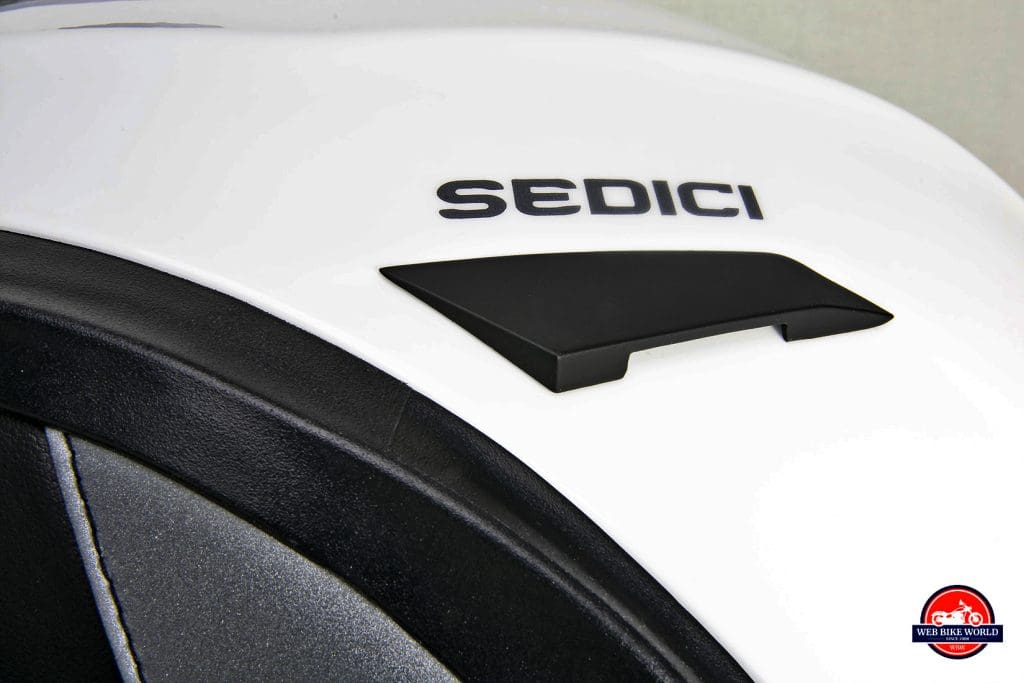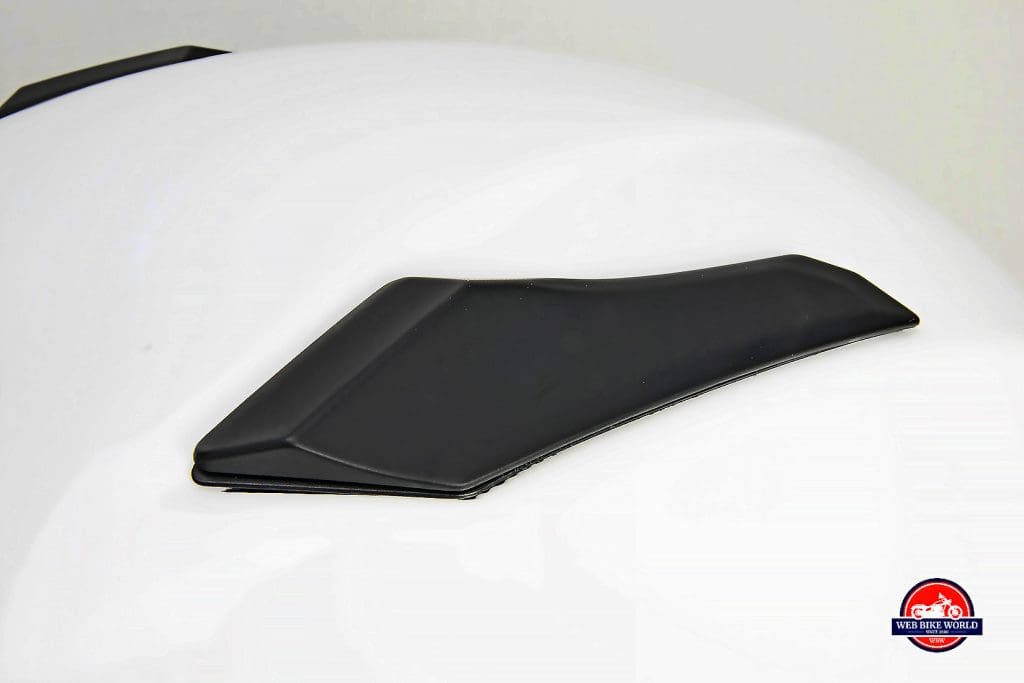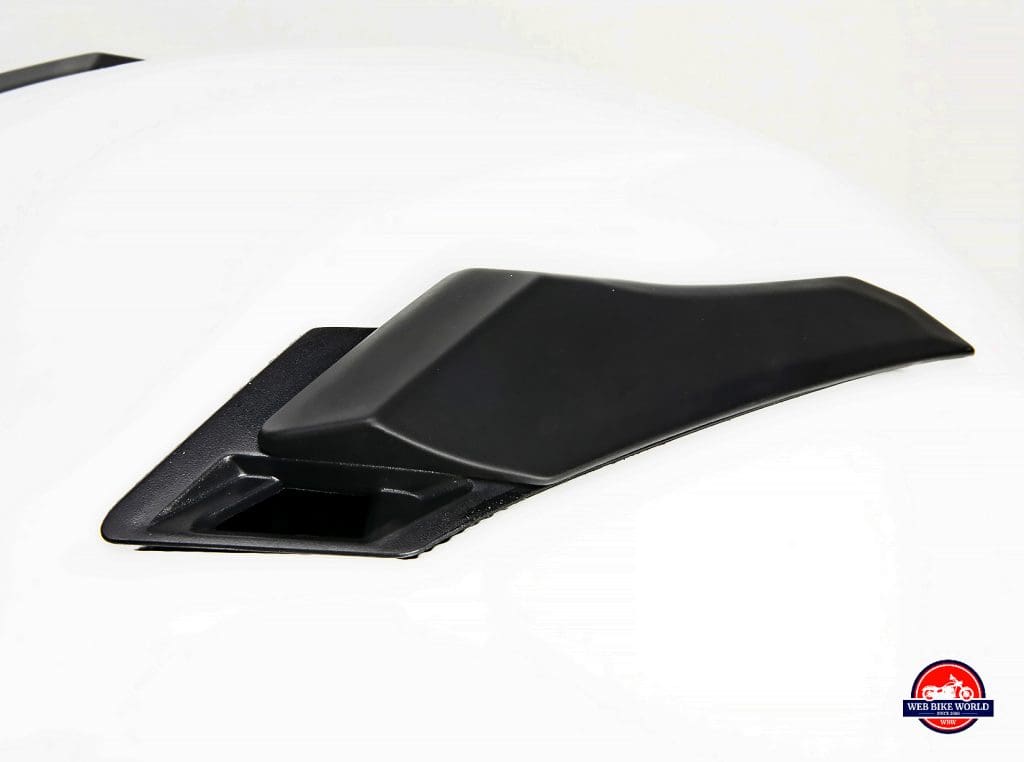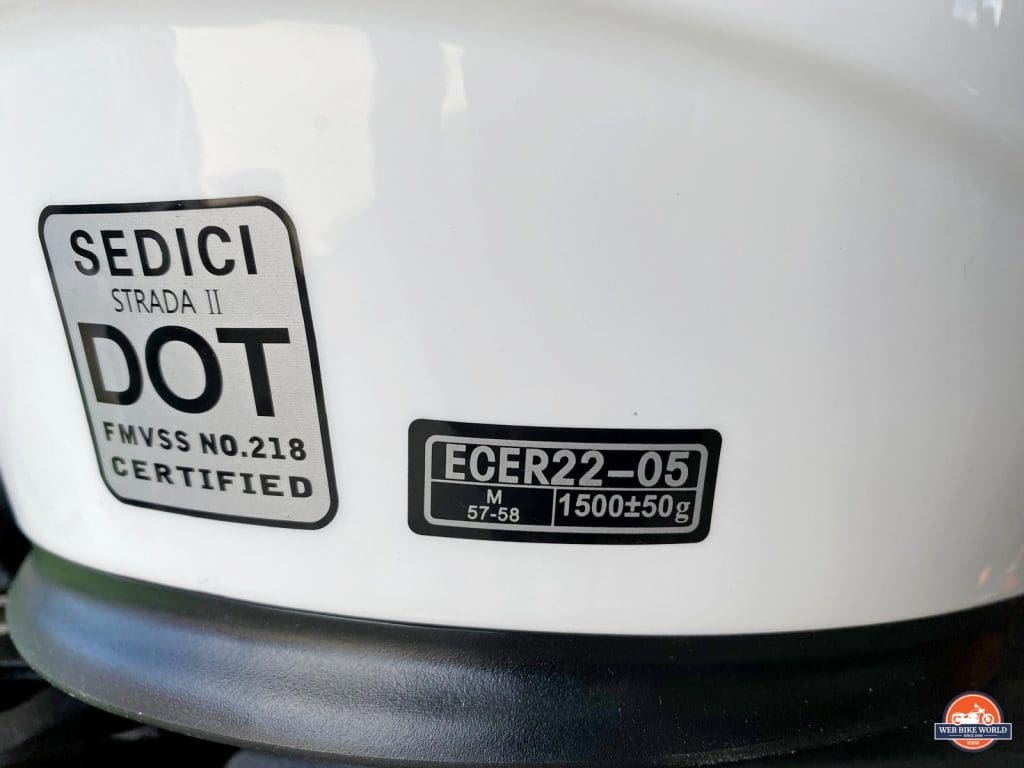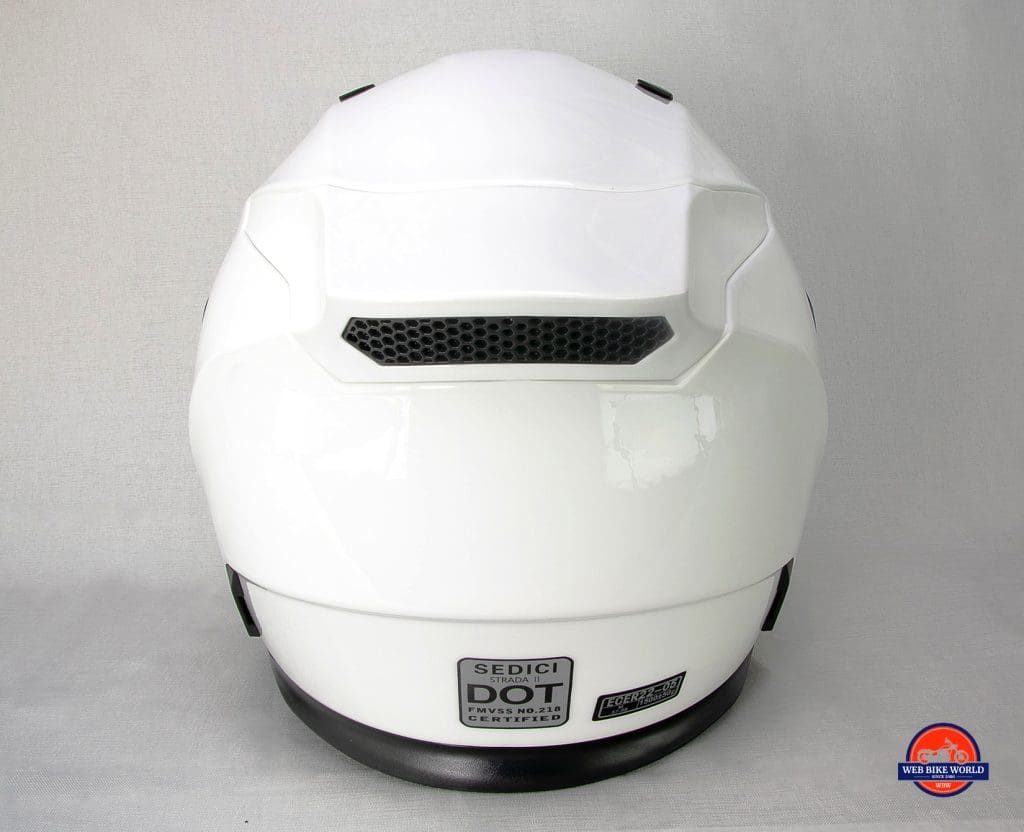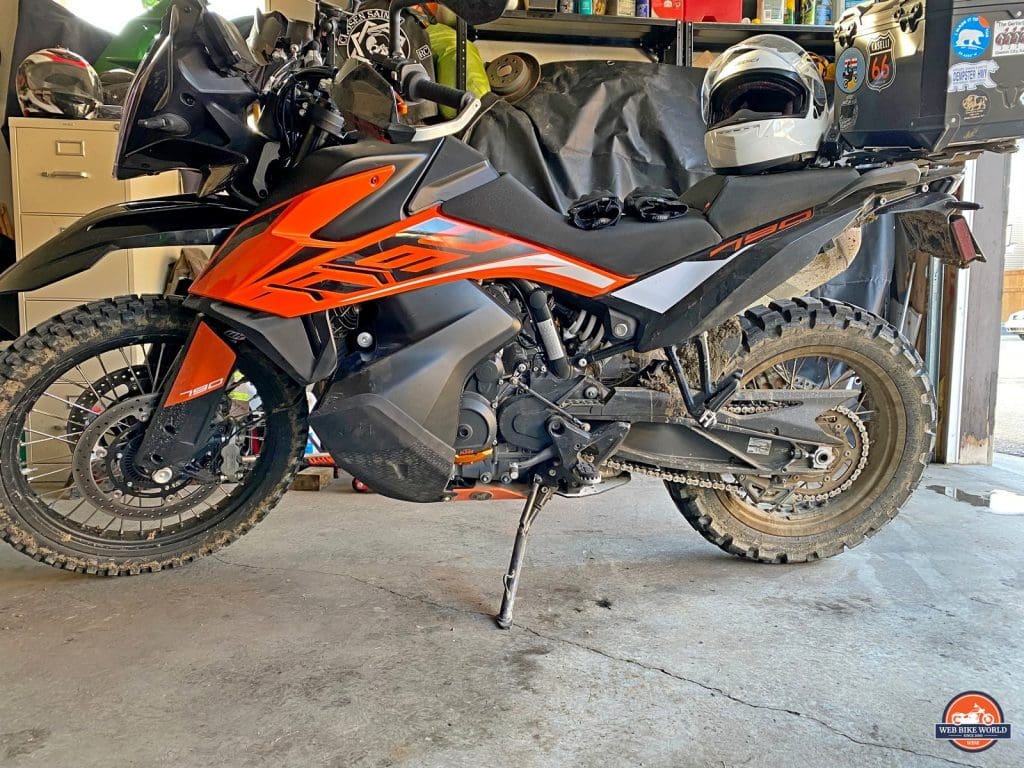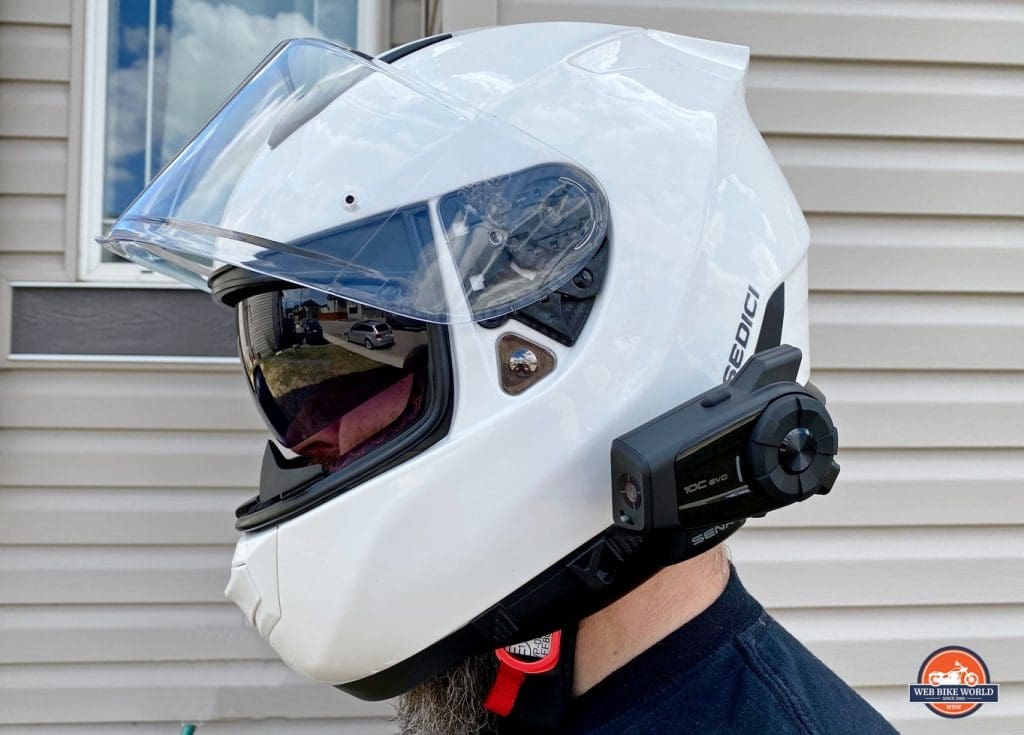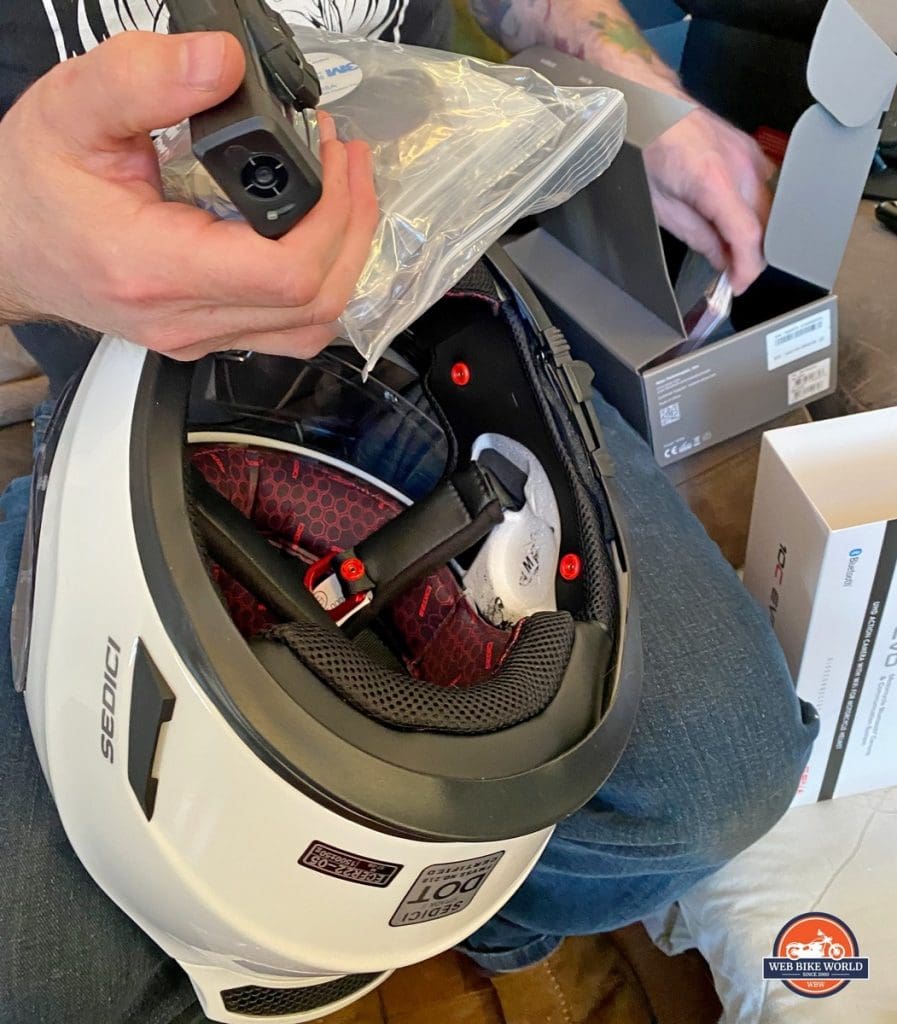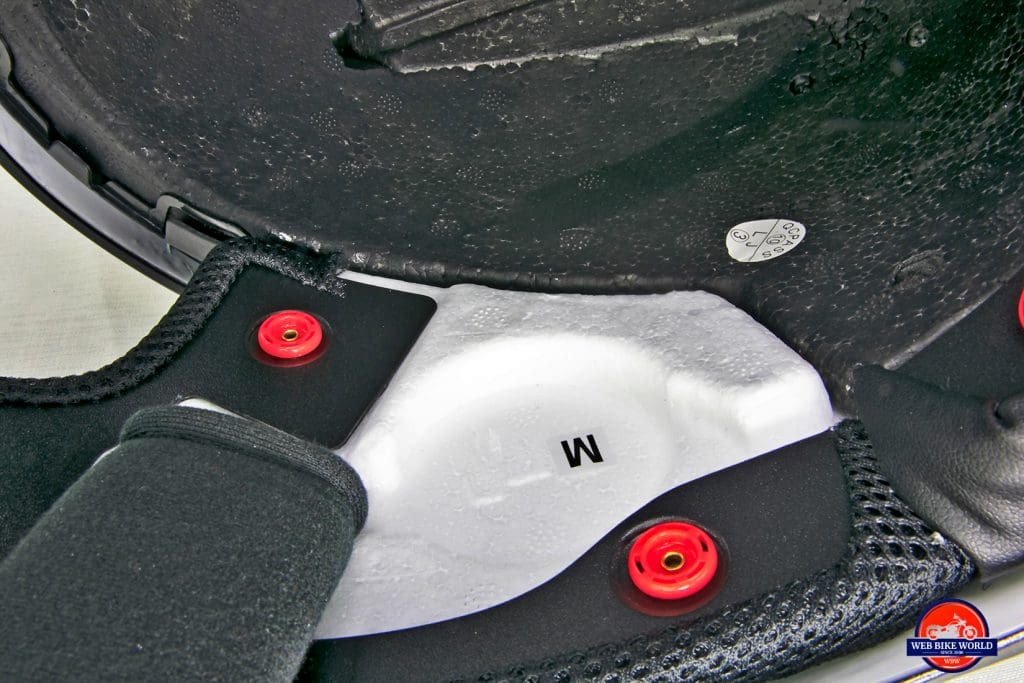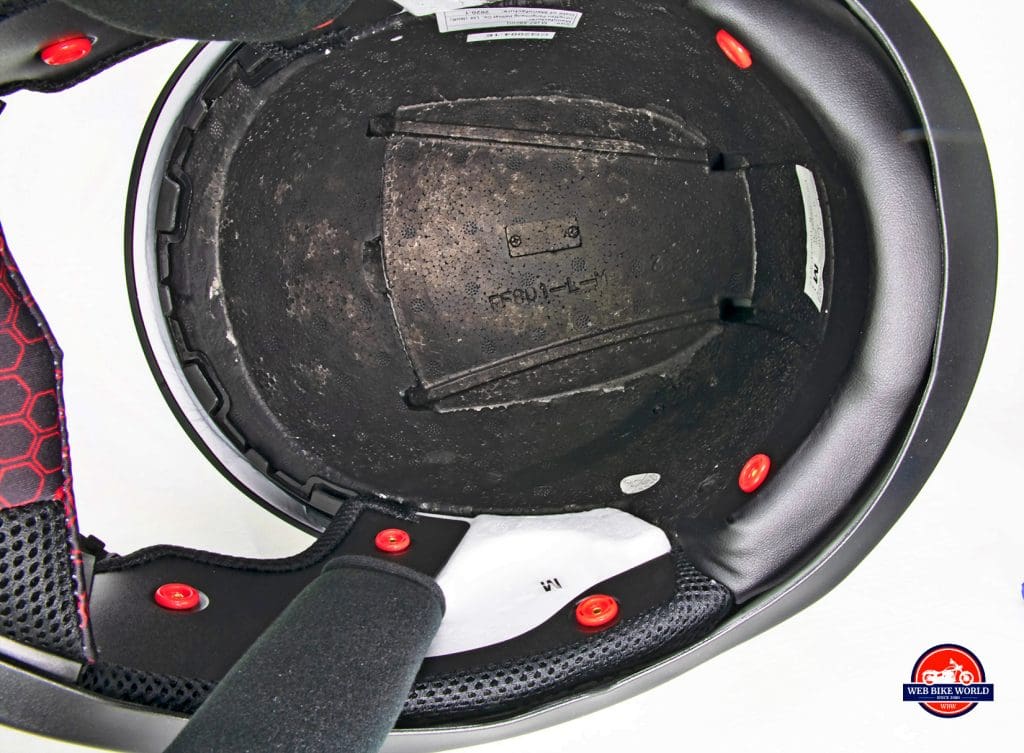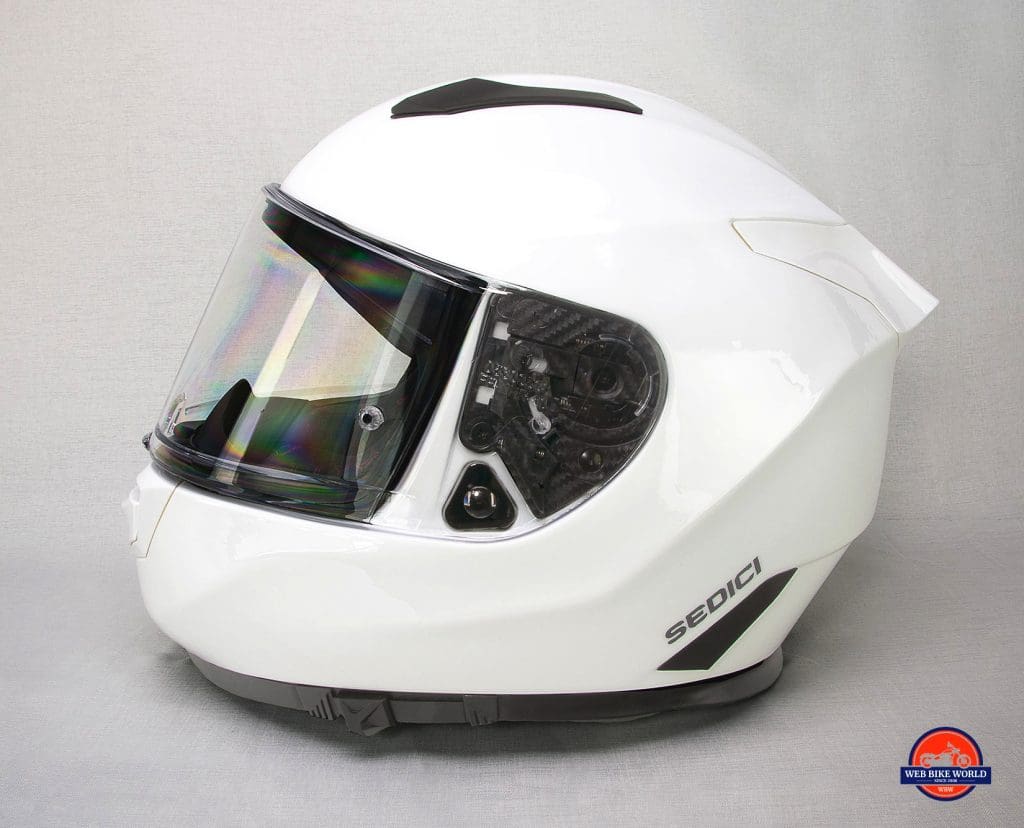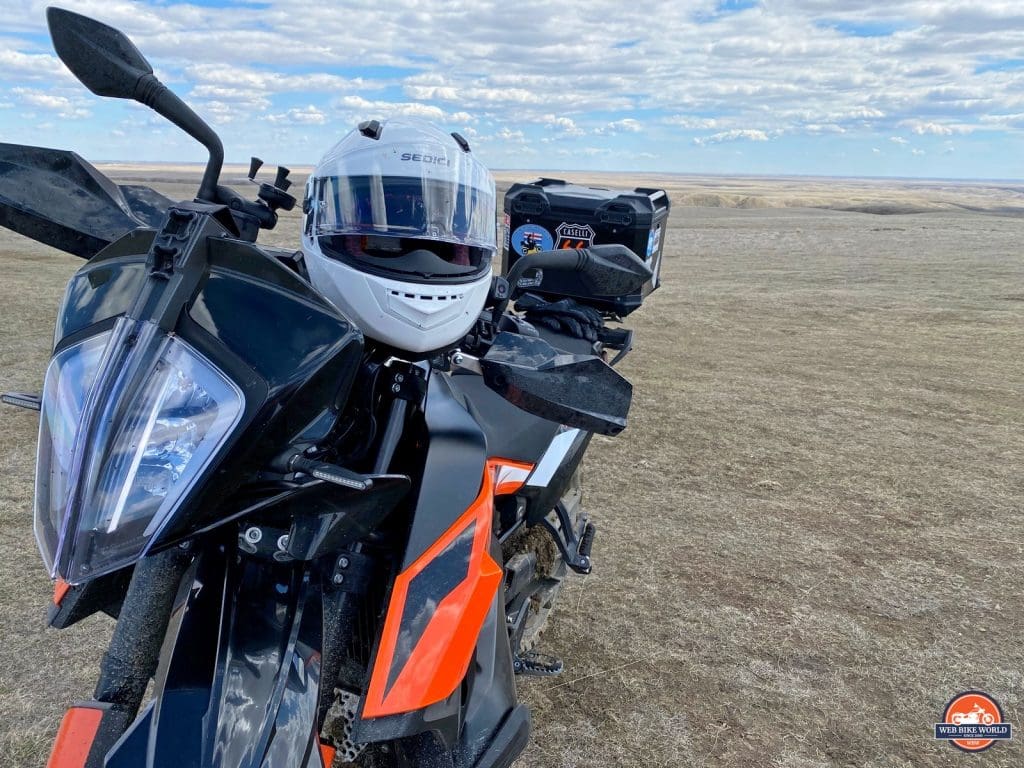I’ve been involved with some inexpensive helmet reviews before and came away mostly underwhelmed. Past reviews of helmets like the Gmax MD01 were “just ok” as one such example.
Even more notably there’s the Nenki NK856, a helmet I would never personally wear and generally love to hate. Sorry Nenki, but you need to do better.
On the other hand Cam’s review of the Snell-rated, Scorpion EXO-R710 has shown me there are quality helmets out there in the $200 range deserving both my attention as a reviewer and our hard-earned money as consumers. Before this Sedici review I would always encourage anyone working with a limited budget to consider buying that Scorpion helmet first.
I still think it’s a really good one!
The Scorpion EXO-R710
My goal as always has been to find the best possible combination of protection, comfort, airflow, low mass and value. Typically I’ve landed in the $350 to $750 USD range to get there, but that’s changing.
Enter the Sedici Strada II
Our friend at Revzilla, Anthony Silvotti (not the “HEYYYYYYYYY-Anthony-from-Revzilla-here” Anthony– a different Anthony) recently offered us a few new Sedici products to review. One was the enhanced sequel to the Strada helmet. The Strada II full face helmet retails at only $199.99. I knew right away based on the specs listed on the Revzilla website that I needed to review it. The Scorpion needs some competition and in my mind this is the right contender to challenge the reigning champ.
Anthony sent it my way at no charge for this review and I’m happy he did.
Helmet Features From Revzilla Site
- Proprietary shell of fiberglass and DuPont™ Kevlar® fiber is lightweight without sacrificing strength
- Aerodynamically tuned shape reduces lift and turbulence
- 3 shell sizes: XS-SM, MD-LG, XL-3XL
- 5 colors to choose from
- Dual-density EPS liner channeled for airflow
- Quick-release flat race shield is anti-fog, anti-scratch and pinlock ready (pinlock insert sold separately)
- Seamless 360-degree face shield gasket minimizes wind noise
- Dark smoke internal drop down sun visor
- 2 position high flow chin vent channels fresh air across the inner shield and rider’s face
- Dual intake vents at the crown with 3 settings
- 3 rear exhaust vents to maximize air extraction
- Removable, washable multi-density cheek pads are moisture wicking and antibacterial
- Adjustable padding at forehead and temples with 5mm of customization
- Removable chin skirt helps minimize wind noise (included)
- Reflective inserts at bottom of neck roll and cheek pads
- Double D-ring closure
- Meets or exceeds DOT and ECE-22.05 standards
A Bit On Sedici
This brand was created in 2009 as a budget-friendly, Italian-inspired design to compete with Alpinestars, Dainese, etc. I wasn’t able to track down the name of the actual founder or the significance of the name Sedici. Sedici translates to “16” from Italian and Strada means “street”, so at least it’s a real word.
Sedici has been a CycleGear house brand from the beginning and with the recent acquisition by Comoto Holdings that means now it’s owned by Comoto/Revzilla.
Revzilla has been actively involved in the quest to morph what initially was found to be a lackluster product (if everyone is completely honest about its performance) into what now they’re calling a “value premium brand.” I equate that meaning you’ll get more for less money and my experience with this helmet has confirmed they’re on the right path. Revzilla has done a great job, but there’s room for improvement yet..
Design, Fit, & Shape
Most often when I check a helmet sizing chart my 23 inch (58.45cm) circumference head lands right between the Medium and Large. This is the case for this Sedici helmet too. I have almost always opted for the smaller size when this happens and this time was no different. That turned out to be the correct way to go.
Donning & Doffing
The neck roll padding on the Strada II is thick and wide. It only leaves a 4-inch wide mouth for me to push my much wider head through when donning this helmet.
I’m pleasantly surprised at the fact it doesn’t leave my ears folded up once they pass through this “birth canal” and settle inside.
I do need a quick side to side wiggle to set everything in place, but the ear pocket works without needing to have a massive void on each side unlike many other tight-fitting helmets.
Interior
The interior is a smooth-textured, antimicrobial, washable, nylon material decorated with honeycomb patterns and small printed Sedici lettering. It’s slightly cool to the touch and there is mesh on the top left and right sides of the crown liner area to help with ventilation channeling and evaporation of perspiration.
I found it only partly succeeded at this during my testing. The highest temperature I wore the helmet in during my testing was 22 Celsius (71 Fahrenheit) and despite the fact I have very short hair I was finding the helmet a tad warm at times. This was most noticeable when I wasn’t moving at an appreciable rate of speed. If you have long hair or a tendency to sweat profusely you won’t want to wear the Strada II long when you aren’t out in the wind.
I’ll go into more detail about the ventilation later on.
Head Shape: I.O
Intermediate Oval is an overused, catch-all adjective tossed around in the helmet industry for far too many helmets in my opinion.
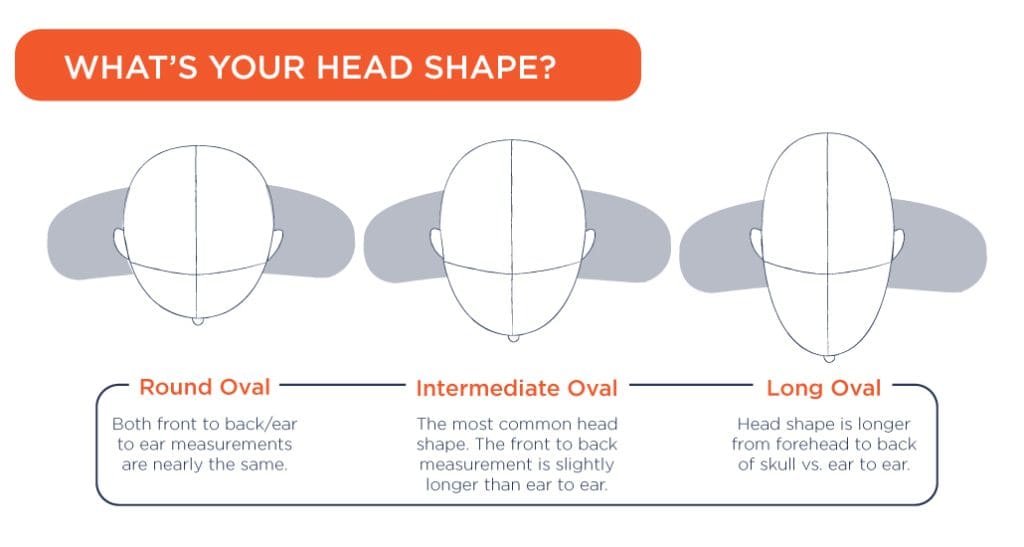
I’ve noticed there’s a broad range in the degree of the “intermediate” part, but to my surprise the Strada II fits exactly as I would interpret that word’s definition. It truly is slightly narrower on the sides than it is front to back and as a result should fit the majority of people out there well.
How I’m sure of that, is the way it fits my Round Oval head. It’s just a bit on the tight side over top both ears, but not to the degree I can’t wear it. Especially after “tuning” it.
Customize Your Comfort Liner
There are 5mm strips of peel away foam on both sides and in front of the crown liner allowing the wearer to tailor the liner thickness to their individual needs. Even for my roundish-shaped noggin it works.
This kind of peel away comfort liner foam is something you’ll also find in Arai helmets, but they go one better and include several layers of it in their cheek padding additionally. In my opinion Sedici imitating Arai is a very good thing.
It’s The Perfect Degree of Snug
The cheek pads fit snug against my face as a new helmet should before it breaks in. There doesn’t seem to be a way to modify these foam pieces, but I’m told there are different thicknesses available from Sedici if you find the fit too tight after it settles in.
As the miles spent testing this helmet turned into hundreds of miles the foam cheek pads relaxed just enough to take on the shape of my head without becoming loose fitting. Sedici did a good job choosing their materials here. I’d almost swear it’s memory foam in the cheek pads the way they fit so tight yet are pliable enough not to cause any cramping.
The uniformity of the Strada II fit everywhere on my head is a stark contrast to the Gmax MD01 helmet which had a loose area at the back of my head and nearly failed the roll-off test when I tried it.
Chinstrap
This helmet comes with a strikingly bright red, double D ring type of chinstrap closure. It works well along with the extra snap on one side to secure the extra length leftover after it’s pulled tight under my chin.
I’ve got no complaints about it and found the padding around the strap was built as it should be to successfully cushion it against my neck. I would have preferred a micrometric style ratcheting closure, but I realize that’s not everyone’s cup of tea.
High marks overall for fitment and comfort from me. Bravo!
It Doesn’t Look Like A “$200 Helmet”
The features of this helmet are well thought out and I would go so far as to describe it as stylish. The smoothly polished, white exterior shell of the Strada II has swooping, aerodynamic lines on each side trailing backward to end in a pointed peak that houses the upper exhaust vent. I would hazard to guess this design was wind-tunnel tested in an effort to keep turbulence at a minimum… or perhaps Sedici is again imitating another proven design?
I know of another highly respected helmet manufacturer whose helmets are shaped similarly and the more I look at the Strada II the more I see familiar features.
Borrowing Design Ideas from Arai and Shoei?
The exhaust vent that points out at the rear of the helmet along with the shape of the chinbar immediately makes me imagine this Strada II could be the offspring of a Shoei GT Air and X-Fourteen romance.
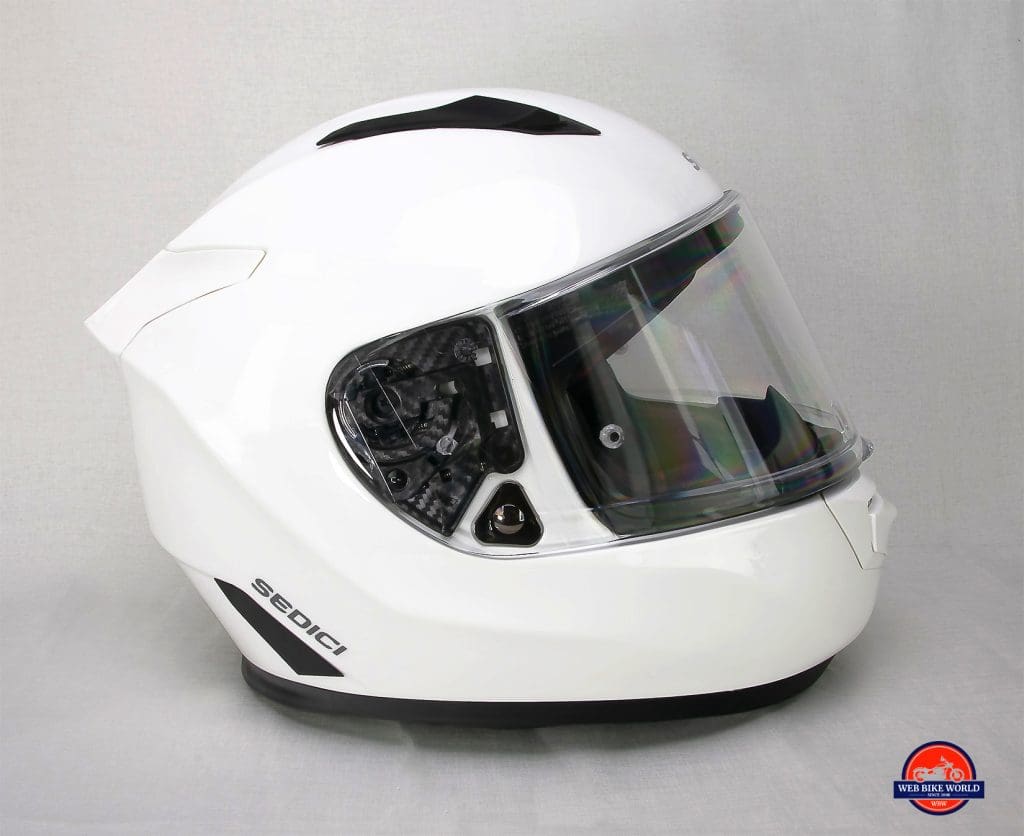
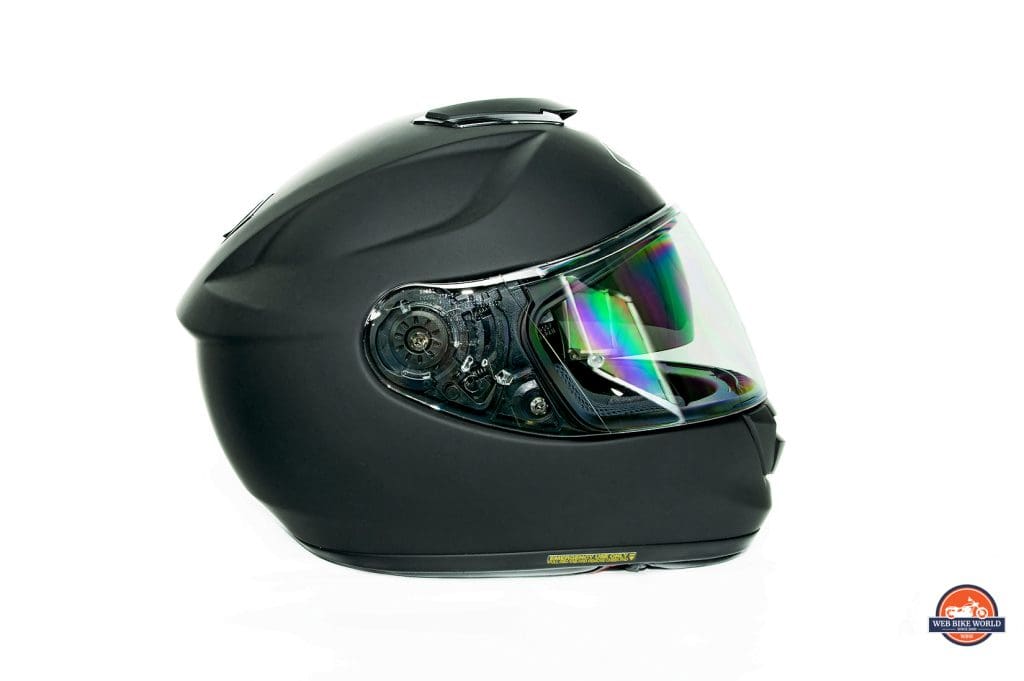
Have a look in the photo below of the GT Air chin bar vent.
That’s very similar to the Strada II chin bar vent below.
Kevlar Infused Shell
Arai embeds woven matting of very strong, puncture-resistant material called Zylon in the crown area of many of their helmet shells. Sedici appears to have liked that idea and with the Strada II they’ve built in a layer of Kevlar to help improve the shell’s strength.
Strada II Primo vs. Strada II
Sedici also makes a slightly different version of the Strada II helmet called the Strada II Primo, and you’ll find a Snell M2020 certification stamp on the back of it. This is basically the same helmet as the Strada II other than the integrated drop-down sun visor. The Primo doesn’t have it and as a result was able to pass the Snell testing. Not that Snell automatically fails helmets with internal sun visors, but most often that feature results in a failure of the penetration test they do in particular.
If I were a betting man I’d wager the Strada II would pass all the Snell tests other than the penetration one because of the void created in the EPS foam necessary to have a drop-down sun visor. To me that speaks to how protective the Strada II helmet is even though I can’t prove for certain my hunch is correct. I’m only speculating but it’s worth pondering.
Visor & Field of View
Here’s where we often separate the good helmets from the average ones. I’m super fussy about visors and how they perform out in the wild.
Easy Off & On
The quick-release latches work perfectly and the visor pops off as if it’s spring-loaded when the release arms are shifted even slightly. Going back on is just about that simple too. I didn’t experience any issues with it coming undone or loosening during testing.
Optically “OK”
The main clear visor on the Strada II is on par for a $200 helmet when it comes to clarity. Calling it optically perfect like on the high-end helmets is way too much of a stretch, but it’s good other than the large, ¾” wide tapered stripe that runs along the bottom. More on that below.
Viewport Size
The eye port opening on this helmet is average-sized and yields acceptable peripheral vision but more importantly better than average downward views.
I’ve noticed that when I look down at my jacket pockets to fetch my wallet or keys I can actually see my hands and the pocket zips as opposed to many other full-face helmets where the chin bar blocks my view and I have to go by feel only.
My Arai DT-X has a much wider (taller?) chin bar that makes getting things out of my pockets hugely challenging compared to the Strada II.
Visor Action & Positioning
The visor has 3 locked-in positions but also an “infinite” amount of placement between closed and fully open. The action on the visor requires a fair flex of your arm muscles to open or close fully thanks to the action on it, and the sharply defined taper at the bottom edge obstructs my view if I have it slightly open. That means you have to basically ride with it fully up, effectively rendering the infinite positioning feature void.
I’m not in love with the visor, but to my IMMENSE delight Sedici has successfully built in the very desirable “just-barely-cracked-open” visor position on the Strada II! This is a feature I always look for in a helmet, yet rarely find done satisfactorily.
Way To Go Sedici!
You know those times when you’re riding and want just a little more airflow to come in than the chin bar vent can provide without getting all the bugs, rain, gravel, etc along with it? Well on many Arai and Shoei helmets you can pop open the visor on the left side using a funny-looking mechanism built there and get it to open about a ¼ inch. It’ll even stay cracked open with the full force of the airstream hitting it until you purposely close it fully.
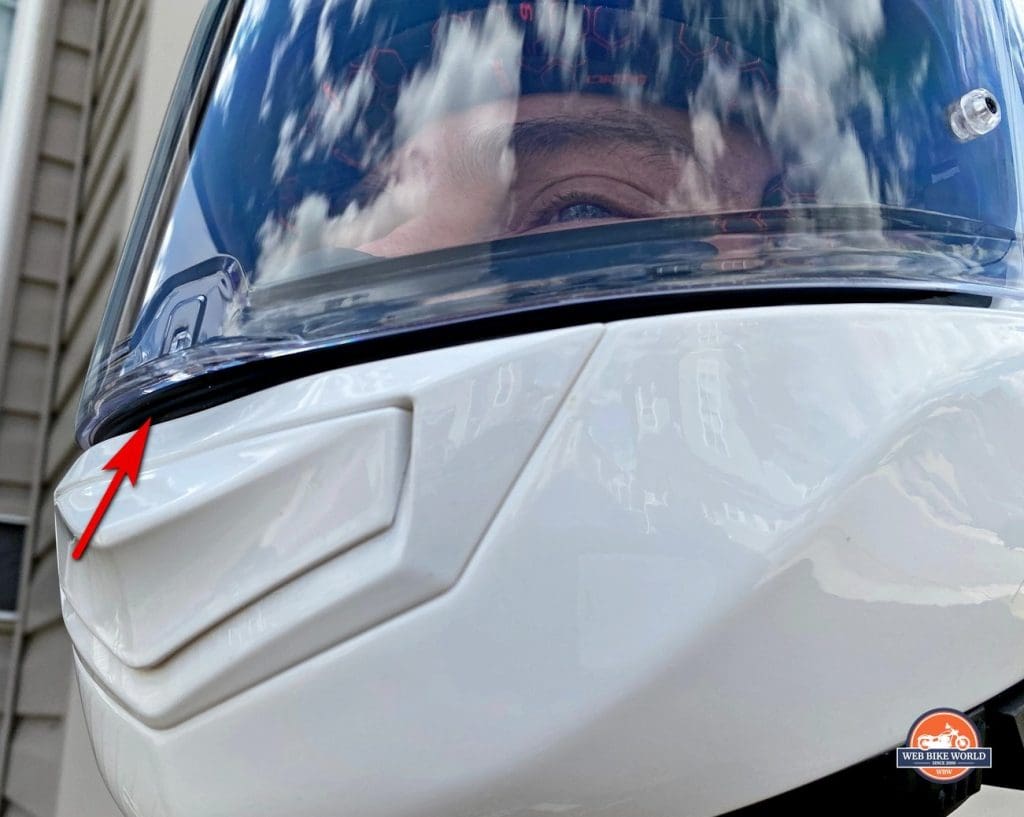
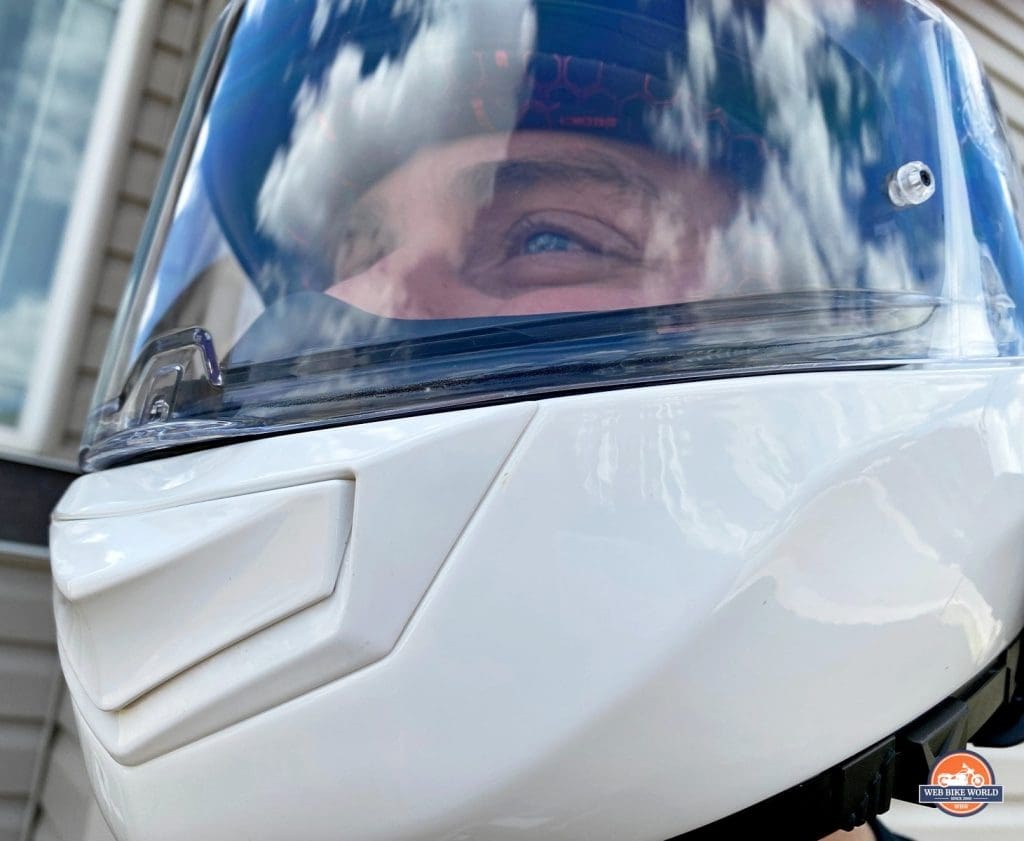
I’ve tested many helmets that will open that slight bit but won’t stay open when the wind presses against it at highways speeds. It’s inexcusable to me that a $700 USD AGV helmet won’t accommodate me in this way… but this $200 Sedici will! Yes I’m referring to the AGV Sportmodular Carbon among other premium helmets I’ve tested.
Fogging
The visor comes Pinlock ready but the anti-fog lens isn’t included with the purchase.
Does it really need it? Surprisingly no. The main visor will fog up briefly if I exhale on the inside of the visor, but the airflow coming in from even just the chin bar vent clears it again in milliseconds. With the visor barely cracked open it won’t fog up at all. They’ve done a good job selecting an anti-fog coating for the main visor.
Integrated Sun Visor Lens
The convenient drop-down, tinted sun lens is very nice to have even at the expense of Snell certification.
I Don’t Mind The Gap
I was initially unimpressed to see the large nose cutout in the center of the sun visor lens because I figured bright sunlight would invade through the opening and my light-sensitive eyes would hate it. As I spent time riding with it in the lowered position, that anticipated irritation from bright light happily never came to be. In fact, I was better able to see my gauges through that untinted gap when I glanced downwards.
Having said that, I did find riding with the main visor open and the sun visor down allowed a steady stream of air to flow through that “nose gap” and right into my eyes. I still think it would be better off without that cutaway section in the middle of the sun lens.
Tint Level
Riders who live in sunnier/sandier regions where light reflects off the ground significantly may feel the tint isn’t dark enough on it, but it’s an appropriate level of shade for the areas I ride in here.
The integrated sun lens does easily fog up compared to the main visor. Luckily that fog can also be cleared away pretty easily using the ample air venting from the chin bar.
Sun Lens Actuator Switch
The slider switch action for lowering or raising the lens glides stiffly and feels low budget when compared to almost any other one I’ve tested. That’s especially noticeable if you try running the one on the Schuberth C4 or C4 Pro which glide as if on silk rails. That’s a brutally unfair comparison to make since these Schuberth helmets cost double and more than what this Sedici helmet does, even when the Schuberths are on sale.
The switch system never failed to work throughout my testing and is good enough to get the job done, but I hope Sedici can smooth this out in the next generation.
This is one example of the kind of refinement you’ll get from the higher-priced helmets on the market. Some people probably won’t even notice something like this, but I do. Others will quickly point out it’s not worth the money for them.
Visor Water Leakage?
It’s still early Spring here in Alberta, Canada, and rain has been scarce thus far. That’s good for getting in riding time but makes it tough to know whether the rubber seal on the visor is going to leak or not once things get soggy out on the road.
That means I have to take it in the shower to try and simulate riding in a torrential downpour. Going into this I had little doubt the seal would leak because every helmet I’ve ever worn and tested has with the one exception being the Arai DT-X.
The rubber visor seal on the Strada II is slightly better quality than many other helmets I’ve handled. It’s made from a supple rubber with a rolled-over tube shape (again similar to the Arai style) to it which potentially could result in a superior seal if the visor is made equally well. It might hold…
Sometimes I Hate It When I’m Right
The Strada II visor didn’t leak with just shower water raining down on it which is good to see, but once I pressed my hand over the visor with slight pressure to simulate wind force on it that’s when predictably a few small lines of water came trickling down the inside of the visor lens to greet me.
Certainly the Sedici doesn’t leak to the same degree as the Simpson Outlaw Bandit (which flows a veritable river of water inside without any pressure on the visor) or the aforementioned Gmax MD01 which soaked my face when I wore it out in the rain… but the Strada II does leak a little bit.
Ventilation
The chin bar vent is really well done. It’s only an open or closed type of vent, but as already mentioned it reminds me of the vents found on the awesome Shoei GT Air. The action on it is snappy and thanks to an ergonomic shape it’s easy to find even wearing thick gloves.
Its air flowing capabilities are above average, easily outperforming some premium helmets I’ve worn like the Schuberth C4 and Shoei Neotec II for example. It’s not as breezy as the AGV Sportmodular Carbon, but that helmet chin bar vent is so wide open that sometimes I’ll get bug guts coming through and hitting my face, so the Sedici is a happy medium. They really nailed the chin bar venting– and how could they not since it appears modeled after the GT Air design, right?
Upper Air Vents
The upper air vents on the other hand don’t do their job as well as I would like. Even when they’re both opened fully the volume of air coming through to cool my scalp falls short of my expectations. I have very short hair and I think many other people would find it totally inadequate for their needs.
The two upper vents are easy to open or close while wearing gloves but I wish the locking positions were “snappy” or more noticeably detented like the one on the chin bar is. That way I’m more confident they’ll stay in the desired position selected over the test of time.
I admit maybe I’m looking for too much from a helmet at this price point, but hey this is just a thoughtful critique calling it like I see it. In order for Sedici to know where they stand I have to compare this helmet to even the best examples out there on the market.
Weight: 3.3lbs?
On the back of this helmet the ECE certification sticker states the Strada II weighs 1500 grams +/- 50 grams. I put it on my scale and rang up 1595 grams as you can see in the preview video I posted on our wBW FaceBook page. I have since confirmed that my scale is accurate, but even at 3.5lbs this fiberglass helmet isn’t what I would define as heavy.
Out On The Road
I’ve logged over 600 miles in the Strada II now and feel confident that I understand fully what it offers the wearer.
Wind Noise
As I predicted in my preview video the Sedici Strada II is on the quieter side of the spectrum out on the road. The plentiful neck roll padding and chin curtain work well together to mitigate roar and hiss.
I find there is at times some whistling that comes from the visor when it’s barely cracked open unfortunately, but it’s not at unbearable levels.
Standard Positioning Is Best
When I face directly into the wind with my head held level as it would be on a standard style riding position the Strada II is at its quietest. I only hear a high pitched hiss with a very slight lower rumble. I’m shocked to find this helmet is roughly the same or even slightly quieter when it comes to wind noise as my Arai DT-X. It’s not as quiet as the Shoei GT Air or GT Air II which are the quietest helmets I’ve personally worn, but it’s in the discussion, which is a huge feather in the cap of Sedici.
Tilting my head forward into a sport position immediately brings out some low pitched roar as I believe the “spoiler” in back starts deflecting trailing air as opposed to smoothing it.
So sport riders won’t enjoy this helmet quite as much as touring, cruiser and naked sport bike riders will when it comes to noise.
Sena 10C EVO Installation
I decided to install a new Sena 10C EVO camera communication device in the Sedici to see how that would go.
It was easy enough to accomplish except that I had to cut two notches in the plastic fin on the left side cheek pad in order to route cables from the unit to the speakers and microphone. The cheek pads came out and went back in with ease as did the crown comfort liner except for where it attaches in the front. There are several small tabs that have to be lined up carefully to get a good fit. It’s only mildly irritating at least. Other helmet liners have been much more challenging to re-install in comparison.
Microphone Issues
I installed the non-boom style mic on the inside of the chinbar as I prefer to do with my Sena devices. I tried unsuccessfully moving the mic’s location around the chin bar to find a place to place it where the swirling air coming in from the vent wouldn’t get picked up as flapping and booming to whomever I was talking to via intercom/phone calls. I didn’t try using the boom mic to rectify this problem because I don’t like fighting with it for space inside my helmet. Using it might possibly have cured the issue, but I’m not sure.
With the chin bar vent closed my audio was crystal clear, but it’s unfortunate I have to shut down my main source of ventilation if I want to have a comfortable conversation with a passenger or to make a phone call.
Speaker Pockets
The Sena speakers lined up beautifully with my ears once I installed them in the pockets built into the Strada II foam liner. It works so well that I’m able to hear my music and phone calls very clearly in this quiet helmet even above 80mph! I used the thinner set of spacers included in the Sena kit to move the speakers a bit closer to my ears which helps a lot, but I feel like Sena has improved their speaker sound with these newer units. Sedici has done fairly well in this helmet to accommodate Bluetooth speaker systems.
I’m sure any other brand name communicator would work in the Sedici Strada II as well.
Lift &Pull
That rear spoiler has a tendency to grab a bit when crosswinds gust excessively. At least, that’s what I think is behind the slight twisting sensation I experienced while out riding on a blustery day in the nearby Canadian Rockies.
When it comes to lift, I didn’t notice any problems whatsoever, which again speaks to the care and attention Sedici put into the design overhaul on the original Strada to arrive at this new Strada II.
Snagging During A Slide
That sharp ridge on the rear exhaust fin could possibly catch on an obstacle during a slide down the road in the event of a crash and cause a neck injury to the wearer, but it may be Sedici designed this plastic fin to break off in an impact in the same way Arai builds their exterior plastic pieces. I’m not sure. It’s not likely to happen and worth the risk in order to get a quieter helmet, but it’s worthy of mention.
Final Verdict?
This is a great fitting, comfortable, reasonably lightweight helmet with a dual DOT and ECE certification that is quieter than average. Add to that the great chinbar venting, a tendency not to fog up drastically or for very long (even sans Pinlock) and you’ve arguably got the best helmet for under $200 currently available. It’s really that good. I’m impressed and my scoring reflects that.
The drop down sun visor and main visor design could be improved and it would really be an unbelievable value if the Pinlock visor was included, but these are minor complaints. It’s hard not to like this lid, although recently I did have a friend of mine try it on and she didn’t care for the fit at all.
That’s the wildcard in all of this helmet reviewing business: personal preference. I strive to be impartial and to consider how the helmet would perform on most people’s heads, but in reality I can only share my experience with the product.
I know this much. If you have a longer, narrower oval head this one likely won’t feel too good at first until you start peeling away layers of foam from the comfort liner. It may not be possible to adjust it enough if your long oval head is on the extreme side of things.
My New Pick
This is my new favourite lower-priced helmet that I’ll recommend to people shopping on a restricted budget. Cam rated the EXO-R710 higher than I’m scoring this Sedici (4.8 vs 4.4 out of 5) but to be fair he hasn’t tried out this helmet yet. I suppose some people (including him) may still prefer it over the Strada II in the end, but for now it gets the nod from me. I doubt you’ll go wrong choosing this Strada II or the EXO-R710.
Scorpion, it’s time to respond to this challenge and make your EXO-R710 even better somehow while keeping it affordable.
Pros
Cons
Specs


